
From Counterculture to Cyberculture: Stewart Brand, the Whole Earth Network, and the Rise of Digital Utopianism
by
Fred Turner
Published 31 Aug 2006
Schwartz, Art of the Long View, 7. For a comparison of the roles of operations research and systems analysis in World War II, see Edwards, Closed World, 113 –21. 18. Edwards, Closed World, 115, 116; Ghamari-Tabrizi, Worlds of Herman Kahn, 48. 19. See Kahn, On Thermonuclear War; Thinking about the Unthinkable; and On Escalation; Kahn, Wiener, and Hudson Institute, Year 2000. 20. Kahn, quoted in Ghamari-Tabrizi, Worlds of Herman Kahn, 70, 75; Kahn, Brown, and Lovins, “New Class”; Kahn, “From Present to Future.” 21. Kleiner, Age of Heretics, 163 –70. 22. Ibid., 156; Gurdjieff, Meetings with Remarkable Men, quoted in Kleiner, Age of Heretics, 157. 23.
…
The School of Management employed the Electronic Information Exchange System (EIES) and had given Brand a modem-equipped [ 130 ] Chapter 4 Kaypro II computer with which to access it. The students at the School of Management included representatives from business, academe, and government; the faculty included futurist Herman Kahn, climatologist Walter Orr Roberts, and anthropologist Mary Douglas. Brand was hired to teach a course called “Benign Social Genres”—that is, a course in understanding the organization of groups like Alcoholics Anonymous and others that Brand perceived as having a benign social impact. What really excited Brand was the computer conferencing system itself.
…
The Planning Group had an unusual reputation in business circles. Through the late 1960s, Shell had planned its future business activities using a highly quantitative procedure known as the Unified Planning Machinery. Around 1970, though, members of the Planning Group embraced a version of the scenario methodology developed by futurist Herman Kahn.10 Using it, the group had predicted the oil crisis of 1973, allowing Shell to profit when other oil companies had not. In 1981 they repeated the feat, and Shell was able to sell off its oil reserves before an international collapse in oil prices occurred. In 1986 the group’s head, Arie de Geus, had begun to reexamine the company’s planning process.
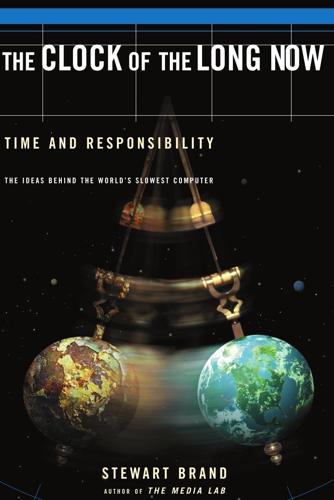
Clock of the Long Now
by
Stewart Brand
Published 1 Jan 1999
Third answers to the same question sometimes tell the truth. While you’re working through your answers, I’ll tell about Herman Kahn and free will. The late, great futurist Kahn used to ponder the question of free will with his audiences. “It’s a fundamental question,” he would say. “Do we have free will, or is everything determined? I don’t have an answer I’m sure of, but I am convinced that people behave better when they think they have free will. They take responsibility more and they think about their choices more. So I believe in free will,” said Herman Kahn. Okay, question time. Are things getting better, or worse? How many hands for better?
…
There’s been a recent upturn of optimism in some sectors, such as in this room, but it’s clearly shallow and fragile. Maybe that’s as it should be. There is lots to worry about. If people fret enough, maybe they’ll take measures to fix things before they get worse. Preserve us from witless optimists! On the other hand, how does the question play against Herman Kahn’s pragmatism test? Do people behave better when they think things are getting better or when they think things are getting worse? If you really think things are getting worse, won’t you grab everything you can while you can? Reap now, sow nothing? But if you think things are getting better, you invest in the future.
…
Some hive off into sectlike groups, such as the Extropians—a 01990s California enclave of bright and enthusiastic Singularity advocates who could hardly wait for the techno-Rapture. They have a classic case of what Paul Saffo calls macro-myopia: “we overexpect dramatic developments early, and underexpect them in the longer term.” Futurismists are predictable once you know their agenda, whereas futurists are not. Herman Kahn, inventor of scenario planning in the 01960s, was a conservative and proud of it, yet he could always startle an audience with a new perspective. Two Long Now board members are well-regarded professional futurists: Peter Schwartz of Global Business Network and Paul Saffo of the Institute for the Future.
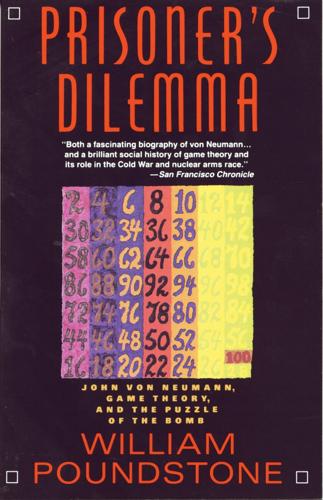
Prisoner's Dilemma: John Von Neumann, Game Theory, and the Puzzle of the Bomb
by
William Poundstone
Published 2 Jan 1993
The windows of the higher floors overlook the Ferris wheel on the Santa Monica Pier, the Frank Gehry-designed Santa Monica Place mall, the civic auditorium, aging motels with names like the Flamingo West, and seafood restaurants adorned with giant clam shells and signs of anthropomorphic lobsters in chef’s hats. Herman Kahn, one of RAND’s best-known analysts, interrupted his thinking about the unthinkable to take a midday swim in the Pacific. When John von Neumann visited, he usually stayed in the nearby Georgian Hotel, still in business, now as an oceanfront home for senior citizens. To many, the RAND Corporation epitomizes modern Machiavellianism.
…
THINKING ABOUT THE UNTHINKABLE In the public mind, RAND is best known for “thinking about the unthinkable” about the waging and consequences of nuclear war. Indeed, one of RAND’s first projects was the selection of targets for a nuclear attack on the Soviet Union. In a memorable bit of RAND prose, theorist Herman Kahn asked (1960), “Would the survivors [of nuclear war] live as Americans are accustomed to living—with automobiles, television, ranch houses, freezers and so on? No one can say, but I believe there is every likelihood …” The bomb predated intercontinental missiles by a decade. It is the ICBM as much as the bomb that creates the dilemmas of push-button war.
…
The moment will come when neither side can face the derisive cry of “Chicken!” from the other side. When that moment is come, the statesmen of both sides will plunge the world into destruction. Russell, of course, is being facetious in implying that Dulles’s “brinkmanship” was consciously adapted from highway chicken. Herman Kahn’s On Thermonuclear War (1960) credits Russell as the source of the chicken analogy. Chicken readily translates into an abstract game. Strictly speaking, game theory’s chicken dilemma occurs at the last possible moment of a game of highway chicken. Each driver has calculated his reaction time and his car’s turning radius (which are assumed identical for both cars and both drivers); there comes a moment of truth in which each must decide whether or not to swerve.
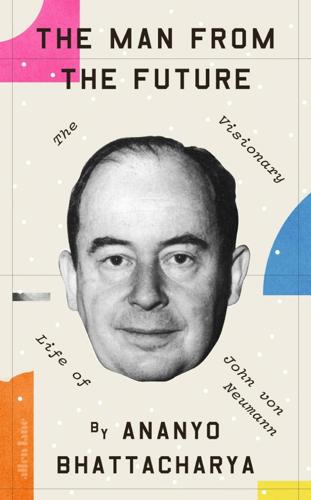
The Man From the Future: The Visionary Life of John Von Neumann
by
Ananyo Bhattacharya
Published 6 Oct 2021
Albert Wohlstetter, ‘The Delicate Balance of Terror’, Foreign Affairs, 37 (January 1959); an earlier and more complete version dated December 1958 is available as RAND Paper P-1472, https://www.rand.org/pubs/papers/P1472.html. 76. Kaplan, The Wizards of Armageddon. 77. The coinage is Alex Abella’s. 78. Kaplan, The Wizards of Armageddon. 79. Ibid. 80. Herman Kahn and Irwin Mann, 1957, Game Theory, https://www.rand.org/pubs/papers/P1166.html. 81. Sharon Ghamari-Tabrizi, 2005, The Worlds of Herman Kahn: The Intuitive Science of Thermonuclear War, Harvard University Press, Cambridge, Mass. 82. Herman Kahn, 1960, On Thermonuclear War, Princeton University Press, Princeton. 83. The director borrowed so much from On Thermonuclear War that Kahn demanded royalties, to which Kubrick replied, ‘That’s not how it works, Herman!’
…
Flood published some of his research in a RAND memorandum entitled ‘Some Experimental Games’.47 The results of his investigations were often surprising. Things did not always go to plan. In June that year, Flood had tried to buy a used Buick from his friend and colleague, the futurist and nuclear strategist Herman Kahn, who was planning to move back east with his family. Flood recast the situation as a sort of two-player game where the object was to reach an agreement on a fair price for the car. By avoiding a car dealer, they could split the ‘surplus’ profit between themselves. The two men decided to consult a used-car dealer they both knew and were able to ascertain his buying and selling price.
…
The armed Atlas D entered service in September 1959, within the timescale that Augenstein had envisaged in his report. The ICBM’s threat of raining death from the skies at the lunatic push of a button has hung over the world ever since. At RAND, the melding of von Neumann’s game theory with defence policy continued apace and found a vocal advocate in the corpulent form of Herman Kahn. To the chagrin of his colleagues, Kahn toured the US cheerfully recasting their theories as provocatively as possible, rapidly becoming the most infamous of RAND’s ‘defence intellectuals’. ‘Thinking about the Unthinkable’, an idea virtually synonymous with the RAND ethos, was the title of one of Kahn’s books and reflected game theory’s rational, at times pathological, precept of imagining the worst possible response to any policy.
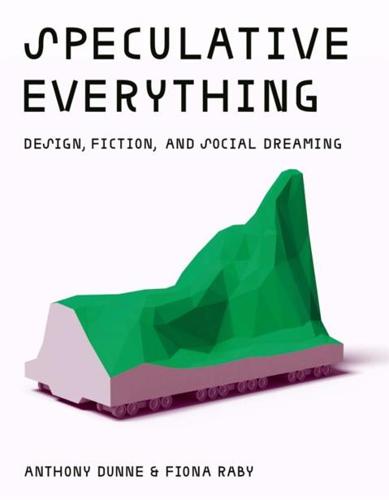
Speculative Everything: Design, Fiction, and Social Dreaming
by
Anthony Dunne
and
Fiona Raby
Published 22 Nov 2013
Bel Geddes intended it to be built and flown between Chicago and London, but sadly, was unable to raise the necessary funding. Norman Bel Geddes, Airliner No. 4, 1929. Image courtesy of the Edith Lutyens and Norman Bel Geddes Foundation. In the shadowlands of big thinking is the RAND Corporation and Herman Kahn. The RAND Corporation developed many of the techniques used today for scenario building." Kahn, who coined the phrase "thinking the unthinkable," more than many, really did think the unthinkable. At one point he reconceptualized the practicalities of nuclear war by thinking through the aftermath in a rational way: what the costs would be and how America could rebuild itself after a nuclear war.
…
At one point he reconceptualized the practicalities of nuclear war by thinking through the aftermath in a rational way: what the costs would be and how America could rebuild itself after a nuclear war. This alarmed many people because it shifted the possibility of a nuclear war from the realm of the completely unimaginable to something much closer to everyday life, even if at an extraordinarily high human and planetary cost. Interview with Herman Kahn, May 11, 1965. Photograph by Thomas J.O'Halloran. Photograph courtesy of Library of Congress Prints and Photographs Division Washington, DC 20540 USA. From the post-war years to the 1970s, rather than only being put to work solving problems, technology was also used to ignite excessive imaginings and audacious dreams for how life could be, and not just on earth; there were many proposals for space colonies, too.
…
New York: Palgrave MacMillan, 2004. Fry, Tony. Design as Politics. Oxford: Berg, 2011. Fuller, Steve. The Intellectual. Cambridge, UK: Icon Books, 2005. Geuss, Raymond. The Idea of a Critical Theory: Habermas & the Frankfurt School. Cambridge, UK: Cambridge University Press, 1981. Ghamari-Tabrizi, Sharon. The Worlds of Herman Kahn. Cambridge, MA: MIT Press, 2005. Goodman, Nelson. Ways of Worldmaking. Indianapolis: Hackett Publishing Company, 1978. Gray, John. Endgames: Questions in Late Modern Political Thought. Cambridge, UK: Polity Press, 1997. Gray, John. False Dawn: The Delusions of Global Capitalism. London: Granta, 2002 [19981.
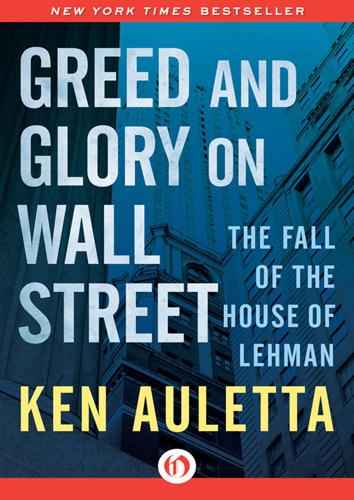
Greed and Glory on Wall Street: The Fall of the House of Lehman
by
Ken Auletta
Published 28 Sep 2015
This did not still the cry for Glucksman’s scalp among the forty-four partners, most of whom were in the banking department (by late 1973, the commercial paper division included only three partners). Fred Ehrman was determined, says George Ball, “to kick Glucksman out of the firm because of the losses.” Several of the senior partners—including Paul Davies, Lucius Clay and Herman Kahn—thought the overweight trader with the stains on his tie was “crude.” Herman Kahn couldn’t shake the memory of how Glucksman had spoken in the presence of “the golden bull,” as he called Bobbie Lehman: “He was obscene to the point that one time I went to him and said, ‘You don’t say, “I don’t give a rat’s ass!” in front of Bobbie Lehman.’”
…
Clay, who won fame as the American who frustrated the Soviet blockade of West Berlin; Paul Davies, a former corporate executive and, along with Clay, a national Republican Party luminary; Paul Mazur, the retail expert who organized Federated Department Stores; Monroe Gutman, who managed the Lehman Corporation, the firm’s investment arm; Harold J. Szold, who ran the banking division; Edwin Kennedy, who helped build several oil giants; Herman Kahn, who developed private placements; banker John Hertz, who shared Bobbie’s love of horses and owned such winners as Count Fleet and Reigh Count—all were gone or too advanced in years. Partners were alarmed, and consequently several withdrew their capital. Over a two-year period, ten partners—more than one-fifth of the firm’s managing directors—left.
…
Even in Bobbie Lehman’s heyday, they felt free because he never raised his courtly voice, always soothed them with praise, rarely displayed the clenched fist. Bobbie Lehman was their benefactor, as he was a benefactor of the arts, of sleek horses, of Pan American or Hertz. “Everyone wanted Bobbie’s applause,” says Herman Kahn, who joined Lehman as a $15-a-week office boy in 1928, filling the vacancy left by Billy Rose, who went on to become a fabled Broadway producer. “Bobbie was the golden bull on the top of the hill for whom we were all panting.” Fred Ehrman tried to rule by fear. When business plunged in 1973, partners mutinied.
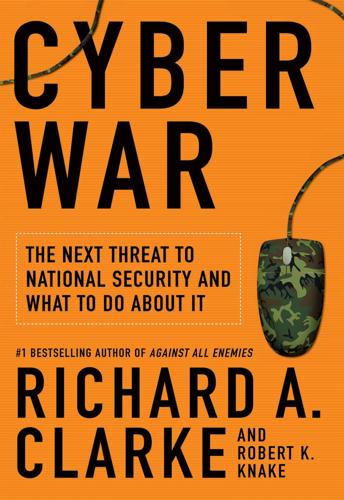
Cyber War: The Next Threat to National Security and What to Do About It
by
Richard A. Clarke
and
Robert Knake
Published 15 Dec 2010
Hence, the only way we can close the gap, the only way we can improve our overall Cyber War Strength score, is to improve our defenses. Let’s take a look at how we might do that. CHAPTER FIVE TOWARD A DEFENSIVE STRATEGY Military theorists and statesmen, from Sun Tzu to von Clausewitz to Herman Kahn, have for centuries defined and redefined military strategy in varying ways, but they tend to agree that it involves an articulation of goals, means (broadly defined), limits (perhaps), and possibly sequencing. In short, military strategy is an integrated theory about what we want do and how, in general, we plan to do it.
…
The horror that could be caused by nuclear weapons (and the fear that any use would lead to extensive use) deterred nuclear-weapons nations from using their ultimate weapons against each other. It also deterred nations, both nuclear-armed and not, from doing anything that might provoke a nuclear response. Strategists developed complex theories about nuclear deterrence. Herman Kahn developed a typology with three distinct classes of nuclear deterrence in his works in the 1960s. His theories and analyses were widely studied by civilian and military leaders in both the United States and the Soviet Union. His clear, matter-of-fact writing about the likely scope of destruction in books like On Thermonuclear War (1960) and Thinking About the Unthinkable (1962) undoubtedly helped to deter nuclear war.
…
Even an attempted penetration of that network to lay in trapdoors and logic bombs might have been detected and interpreted as a prelude to imminent bombing. So just getting into position to launch a cyber attack would have sent the wrong message in a crisis, unless those steps had been taken well in advance. Herman Kahn, Thomas Schelling, William Kaufmann, and the other “Wizards of Armageddon” spent a lot of time thinking about how to control nuclear escalation, from the tensions leading up to a crisis, to signaling, to initial use, to war termination. Initially the nuclear strategists saw war moving slowly up the escalatory ladder, with diplomatic attempts being made at every rung to stop the conflict right there.
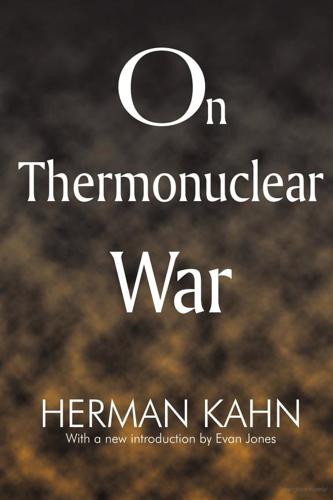
On Thermonuclear War
by
Herman Kahn
Published 16 Jul 2007
But the nuclear genie is out of the bottle, and the lessons and principles developed in On Thermonuclear War apply as much to today’s China, Russia, Iran, and North Korea as they did to the Soviets. Evan Jones FOREWORD In The Analysis of military problems since the war, the contribution of civilians has been unprecedentedly large in volume and high in quality. Herman Kahn's book clearly demonstrates the chief reason for this phenomenon. The problems of defense have become inordinately complex, and their solution is not susceptible to the rules of thumb, often called principles, which the military derived from past experience. For stating and solving these problems, all the analytical techniques are required which the disciplines of social science, history, and mathematics have evolved.
…
These techniques are not nearly adequate, but they are the best we have, and we must employ them if we do not want to base judgment and policy to an excessive degree on vague reasoning and sheer guesswork. Indeed, On Thermonuclear War is as remarkable for its sophisticated exercises in method as it is for the substantive solutions and proposals it offers. Without his masterly command of method, it would have been impossible for Herman Kahn to examine such an extraordinary range of interrelated problems and, compared with the extant literature, do it so exhaustively. Since these are lectures in book form, some of the informality of the original presentation—of its style and organization—has been preserved. The step-by-step presentation of extremely complex problems will be appreciated by the reader as long as he refrains from evaluating particular points out of the unfolding context.
…
Finally, it may be worth saying that, though the subject matter raises profound moral issues, this is not a book about the moral aspects of military problems. Most of the research for this book was done at The RAND Corporation. It was written largely while the author was a Visiting Research Associate at the Center of International Studies. We were glad to support this venture and to sponsor its publication. Herman Kahn's presence at the Center was for many of us a great learning experience. This book opens this experience to many others. Klaus Knork Center of International Studies Princeton University May 23,1960 PREFACE Men And Governments have long lived with the painful problem of choice. Even those with courage to make hard choices and the willingness to choose resolutely between good and evil, redemption and damnation, joy and sorrow, have never been able to insure the final result.
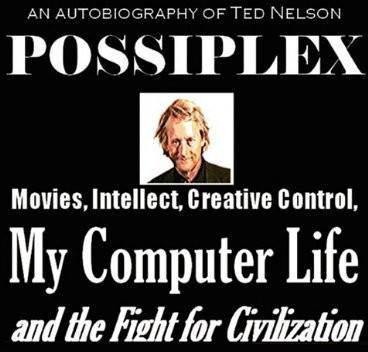
Possiplex
by
Ted Nelson
Published 2 Jan 2010
. === 1962 (I was 24) Meanwhile, Back at the Department It became clear I wasn’t going to get a doctorate in Soc Rel. I did not pass the prelims, nor was I offered a second chance. My crazed interests were known to everyone. I was not on their planet. What would Herman Kahn have said? 1962 One of the places I applied for a job that spring was The Hudson Institute, a new think-tank concerned with issues of strategy. Herman Kahn was there. I had heard Kahn speak a couple of times, and respected him in his craziness. David Riesman called him “the Danny Kaye of the arms race”*, but Kahn was looking at what no one else dared think about. Kahn talked about nuclear war in a chummy way, as if it were always present in the room, which it was.
…
Kahn was in the passenger seat, and with his weight—perhaps three hundred pounds, perhaps more—the little car sagged far to the right. Kahn kept making interesting assertions and conjectures on a wide variety of topics, estimating all sorts of numbers, and would always close the sentence with “figures on that order.” How did he know? Ah, but that was the metagamesmanship of nuclear gamesmanship. A key point about Herman Kahn: he was one of the few people who predicted that the Soviet Union would implode from its own internal problems. That outcome almost everybody. And his thinking contributed to everyone’s facing reality about nuclear weapons. This may have helped Schelling put in the hot line. Ca 1962 What I called it first: Fanfasm I was going to call this my pseudo-photography system system "Fanfasm,” named after a tribe in the Oz books.
…
One Saturday or Sunday, Dave came by my place with a friend. (I had a nice little two-room apartment above a garage.) I may have been crabby because my working time on weekends was so precious to me, and this social interruption knocked out my plans. Dave and I had joked about nuclear war a couple of times, as boys do. But then he found Herman Kahn's On Thermonuclear War on my shelf. He gave me a very dirty look, as if the subject was okay to joke about but not to study. Last I heard from Dave Crosby, word reached the coffeehouse that he was looking for a name for his new singing group. They later chose "The Byrds." Bateson For all too short a time I had an illustrious office-mate named Gregory Bateson.
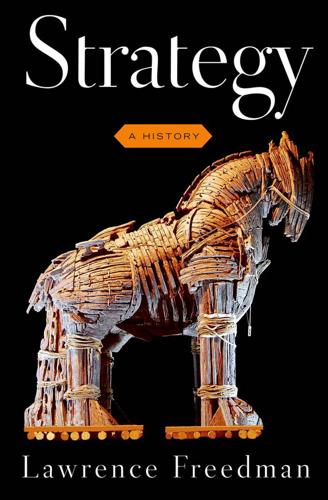
Strategy: A History
by
Lawrence Freedman
Published 31 Oct 2013
Stanley Hoffmann, “The Acceptability of Military Force,” in Francois Duchene, ed., Force in Modern Societies: Its Place in International Politics (London: International Institute for Strategic Studies, 1973), 6. 5. Glenn Snyder, Deterrence and Defense: Toward a Theory of National Security (Princeton, NJ: Princeton University Press, 1961). 6. Herman Kahn, On Thermonuclear War (Princeton, NJ: Princeton University Press, 1961), 126 ff. and 282 ff. It was originally going to be known as “Three Lectures on Thermonuclear War.” 7. Barry Bruce-Briggs, Supergenius: The Megaworlds of Herman Kahn (North American Policy Press, 2000), 97. 8. Ibid., 98. Noting the appalling style, Bruce-Briggs concludes that: “The artlessness imparts authenticity; were the author a hustler, he would have been slicker and ingratiating.” 9.
…
It soon reached its limits when it came to addressing such questions as to how vital interests could be defended without disaster when war was so dangerous, or whether it was possible to fight wars limited to conventional capabilities without escalation. CHAPTER 13 The Rationality of Irrationality This is a moral tract on mass murder: How to plan it, how to commit it, how to get away with it, how to justify it. —James Newman, review of Herman Kahn, On Thermonuclear War DESPITE BRODIE’S NOMENCLATURE, the first atomic weapons were not “absolute.” They were in the range of other munitions (the bomb that destroyed Hiroshima was equivalent to the load of some two hundred B-29 bombers). Also, at least initially, the weapons were scarce. The key development introduced by atomic bombs was less in the scale of their destructive power than in their efficiency.
…
Thus the main conceptual challenges concerned punishment, especially the most brutal punishment of all: nuclear retaliation. As deterrence became wedded to a foreign policy of containment, interpreted as preventing any Soviet advances, both major war and minor provocations had to be deterred, not just those directed against the United States but also those directed against allies, and even the enemy’s enemies. Herman Kahn, an early popularizer of some of the more abstruse theories of deterrence, distinguished three types: Type I involved superpower nuclear exchanges; Type II limited conventional or tactical nuclear attacks involving allies; and Type III addressed most other types of challenges.6 At each stage, the requirements in terms of political will became more demanding, especially once both sides had acquired nuclear arsenals.
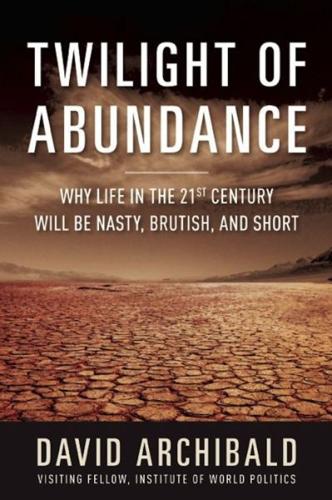
Twilight of Abundance: Why the 21st Century Will Be Nasty, Brutish, and Short
by
David Archibald
Published 24 Mar 2014
The hostility between us is not a personal matter. It is a matter of principle. We are in disagreement over the very principles that underlie our revolution and our Islam.”1 The United States may not be interested in Iran, but Iran is very much interested in the United States. On Thermonuclear War, Herman Kahn’s 1960 book on the theory of how to conduct nuclear warfare, is over six hundred pages long.2 Iran’s philosophy on conducting the nuclear war it wishes to have can be summarized in a few sentences spoken by a former president of the republic, Ayatollah Hashemi Rafsanjani, in December 2001: “the use of even one nuclear bomb inside Israel would destroy everything. . . . while the Muslim world, if attacked in retaliation, could easily afford to lose millions of martyrs.”
…
Skoyles, “Human Metabolic Adaptations and Prolonged Expensive Neurodevelopment: A Review,” Nature Precedings, uploaded 2008, http://precedings.nature.com/documents/1856/version/2. 7.Winston Churchill, The River War (London: Longman, Green, 1899). 8.Richard Kugler, “Operation Anaconda in Afghanistan: A Case Study of Adaptation in Battle,” Case Studies in Defense Transformation, no. 5, sponsored the Office of the Deputy Assistant Secretary of Defense and prepared by the Center for Technology and National Security Policy, 2001, http://www.dtic.mil/cgi-bin/GetTRDoc?AD=ADA463075. Chapter 5: Pakistan’s Nuclear Weapons 1.Amir Tahiri, The Persian Night: Iran Under the Khomeinist Revolution (New York: Encounter, 2010). 2.Herman Kahn, On Thermonuclear War (Princeton: Princeton University Press, 1960). 3.Tahiri, The Persian Night. 4.Peter Robinson, “An Endless Struggle,” Hoover Digest 3 (2013): 148–58. 5.Paul Bracken, The Second Nuclear Age: Strategy, Danger, and the New Power Politics (New York: St. Martin’s Griffin, 2013). 6.Chernobyl: Assessment of Radiological and Health Impacts, 2002 update of Chernobyl: Ten Years On (Nuclear Energy Agency, Organisation for Economic Cooperation and Development, 2002), http://www.oecd-nea.org/rp/chernobyl/.
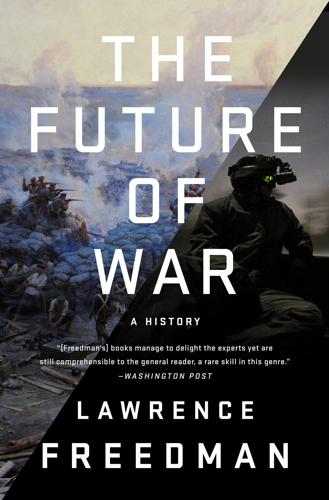
The Future of War
by
Lawrence Freedman
Published 9 Oct 2017
Kahn had a mischievous sense of humour to the point that one biographer considers his potential as a stand-up comic. See Sharon Ghamari-Tabrizi, The Worlds of Herman Kahn: The Intuitive Science of Thermonuclear War (Cambridge, MA: Harvard University Press, 2005). 23. The first book on RAND was Bruce L. R. Smith, The RAND Corporation; Case Study of a Nonprofit Advisory Corporation (Cambridge, MA: Harvard University Press, 1966). The personal rivalries come out in Fred Kaplan’s Wizards of Armageddon (Stanford: Stanford University Press, 1983). 24. Herman Kahn, On Thermonuclear War (Princeton: Princeton University Press, 1960) 144. 25. The actor who played Strangelove, Peter Sellers, modelled him on Wernher von Braun, the German rocket scientist whose skills had been put to use after the war at the Army’s Redstone Arsenal.
…
This time, however, when the bomb was released it detonated and the Doomsday device was triggered. Kubrick introduced Dr Strangelove, a civilian strategist with a Nazi past. There was no such character in Red Alert, although there was an equally sinister Professor Groeteschele in Fail-Safe. Both Groeteschele and Strangelove were modelled on Herman Kahn, who had written the bestselling account of nuclear strategy, On Thermonuclear War, published in 1960, and had become something of a celebrity as a result of his provocative analyses and an apparent tendency to playfulness when talking about mass death. Kahn was a favourite target of critics, and his humanity had been questioned—‘no one could write like this; no one could think like this.’22 He had written his book at the RAND Corporation, the most famous of the ‘think-tanks’ where the mysteries of nuclear strategy were explored, although he left soon after its publication to set up his own Hudson Institute, in part because his colleagues at RAND objected to his showmanship and because he felt they were becoming too bureaucratic.23 In both movies the Kahn character allows nuclear war to be discussed in terms of a cold rationality, detached from any human emotion.
…
The Journal of Modern History 70.4 (1998): 759–812. Gerwarth, Robert. The Vanquished: Why the First World War Failed to End. London: Allen Lane, 2016. Gettleman, Jeffrey. ‘Forever Wars: Why the Continent’s Conflicts Never End’. Foreign Policy 178 (2010): 73–5. Ghamari-Tabrizi, Sharon. The Worlds of Herman Kahn: The Intuitive Science of Thermonuclear War. Cambridge, MA: Harvard University Press, 2005. Ghobarah, Hazem Adam, Paul Huth, and Bruce Russett. ‘Civil Wars Kill and Main People—Long After the Shooting Stops’. American Political Science Review 97.2 (2003): 189–202. Gibler, Douglas, and Jaroslav Tir.

Whole Earth Discipline: An Ecopragmatist Manifesto
by
Stewart Brand
Published 15 Mar 2009
Occasionally we’ll invent useful economic instruments like debt-for-nature swaps, and many of our organizations are well run financially, but money issues are customarily employed by Greens strictly as a weapon. “If you want to kill a power project,” advises one activist in Orion magazine, “focus on economics.” I recall the futurist Herman Kahn talking about the fight over the Trans-Alaska Pipeline in the 1970s: “The Greens began by complaining about the design of the pipeline, and they were right, it did have flaws. But once those were fixed, the Greens put all their effort into forcing delays and extravagances that raised the cost of the system.
…
One of my jobs as an assistant to California governor Jerry Brown was to arrange visits to his office by leading intellectuals. Brown’s view was that “government may not always be the first to know about important new ideas, but it should not be the last.” Thus every few weeks I got to spend a day hosting the likes of organizational guru Peter Drucker, futurist Herman Kahn, farmer-poet Wendell Berry, and media celebrator Marshall McLuhan. In 1977, two years after Asilomar, the California legislature was threatening to regulate recombinant DNA research in the state, so James Watson, the codiscoverer of the structure of DNA and director of the renowned Cold Spring Harbor Laboratory, came to visit.
…
Guanacaste Conservation Area, Costa Rica Guardian Guidetti, Geri Gwadz, Robert Haeckel, Ernst “Half Century of United States Federal Government Energy Incentives, A” (Bezdek and Wendling) Hallwachs, Winnie Hamming, Richard Hansen, James Hansson, Anders Harris, Michael Harrison, Jim Haseltine, William Hawaii Hawken, Paul Hawks, John heat waves Hebert, Paul Henderson, Donald herbicides Herman, Arthur Higgs, Eric High Country News Hillis, Danny Hiroshima, Japan HIV/AIDS Holdren, John Holistic Management (Savory) Homer-Dixon, Thomas Hopis horizontal gene transfer horses Howard, Albert Humanitarian Golden Rice Network hurricanes hybrid seeds hydroelectric power hydrogen ice-to-water albedo flip Idea of Decline in Western History, The (Herman) IEEE Spectrum iGEM Jamboree Iglesias-Rodríguez, Débora Illicit (Naím) “Implications of Rising Carbon Dioxide Content of the Atmosphere” (Conservation Foundation) Inconvenient Truth, An Independent India genetic engineering and Green Revolution and nuclear power and slums and Industry Association of Synthetic Biology informal economy infrastructure insect resistance insulin integral fast reactors integrated pest management intelligent design Intergovernmental Panel on Climate Change (IPCC) International Atomic Energy Agency (IAEA) International Consortium for Polynucleotide Synthesis International Council of Science (ICSU) International Human Microbiome Consortium International Maize and Wheat Improvement Center International Rice Research Institute International Soil Reference and Information Centre International Union for Conservation of Nature and Natural Resources (IUCN) Internet Internet Engineering Task Force Intertribal Bison Cooperative Intervention (Caruso) iron irrigation Islam, Muslims Italy jaguars Janzen, Daniel Japan atomic bombing of genetic engineering and nuclear power and Jefferson, Richard Jennings, Lois Judson, Horace Juniper, Tony Kahn, Herman Kahn, Lloyd Kaplan, Robert Kareiva, Peter Kaufman, Wallace Keeling, Charles Keith, David Kelly, Brian Kelly, Kevin Kenya Keynes, John Maynard Khosla, Vinod King, Franklin Hiram Kirk, Andrew Klaassen, Johann Kleiber’s law Knight, Tom Kohm, Kathy Korea, North Korea, South Kunstler, James Howard Kyoto Protocol (2001) L-1 Point (Inner Lagrange Point) Lackner, Klaus Lake Nyos, Cameroon, disaster in Lamarck, Jean-Baptiste Lament for an Ocean (Harris) landraces Langewiesche, William Lansing, Stephen Laquian, Aprodicio Last Forest, The (London and Kelly) Last Whole Earth Catalog Latham, John Latin America genetic engineering and see also specific countries Laws of Fear (Sunstein) LeBlanc, Steven LEED rating system Lehmann, Johannes Lerner, Jaime Lewis, John Liberation Biology (Bailey) Liferaft Earth Limits to Growth, The (Meadows et al.)
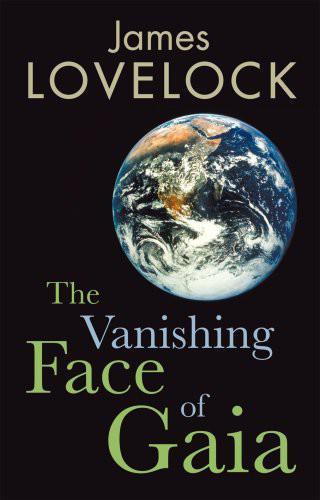
The Vanishing Face of Gaia: A Final Warning
by
James E. Lovelock
Published 1 Jan 2009
I wish that I had more confidence in our capacity to forecast the climate of 2050. I remember too well the forecasts of the present day made in the 1960s. None of them even glimpsed the climate changes that have already happened; indeed most thought an ice age more likely than global heating. The best guesses at 21st‐century life shared the vision of that great prophet Herman Kahn, who fore‐saw a benign hi‐tech world with everyone living at the standard of Scarsdale, the suburb he lived in near New York, and if you look at the burgeoning middle class of India and China now he was not far wrong. Kahn was good at predicting the way the human world would go but wholly ignorant about the Earth and the consequences of the rapid growth of population, agriculture and energy‐intensive industry.
…
Like the solar system, the nervous system or the operating system of your computer, this is the sense in which I use the word ‘system’ in this book. Further Reading 1 The Journey in Space and Time John Gray, Straw Dogs (Granta, London, 2002) John Gray, Black Mass (Allen Lane, London, 2007) John Gribbin, Hothouse Earth and Gaia (Bantam Press, London, 1989) Herman Kahn, William Brown and Leon Martel, The Next 200 Years: A Scenario for America and the World (William Morrow, New York, 1976) Robert Kunzig and Wallace S. Broecker, Fixing Climate (Green Profile, London, 2008) Mary Midgley, Science and Poetry (Routledge, London, 2002) Oliver Morton, Eating the Sun (Fourth Estate, London, 2007) Fred Pearce, Turning Up the Heat (The Bodley Head, London, 1989) Stephen H.
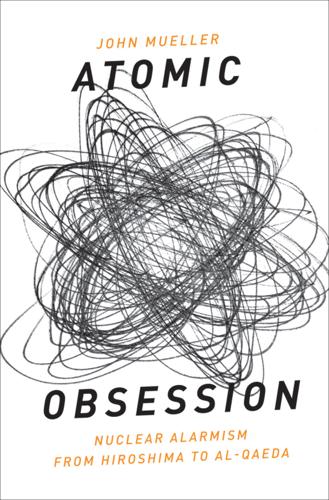
Atomic Obsession: Nuclear Alarmism From Hiroshima to Al-Qaeda
by
John Mueller
Published 1 Nov 2009
In explaining his approach, Kramer insisted that “This is a serious picture, it’s about the end of the world, and we have to give them romance and sex.” The combination certainly suited the reviewer for the Saturday Review of Literature, who deemed it “a picture that aims at something big and emerges as something tremendous.” Around the same time, strategist and futurist Herman Kahn was warning, “I have a firm belief that unless we have more serious and sober thought on various aspects of the strategic problem … we are not going to reach the year 2000—and maybe not even the year 1965—without a cataclysm,” even as C. P. Snow was publishing his alarmist broadside proclaiming it to be a “certainty” that, if the nuclear arms race between the United States and the Soviet Union were to continue and accelerate, a nuclear bomb would go off “within, at the most, ten years.”4 Nuclear Fear Subsides: The 1960s and 1970s None did, as it happened.
…
FORMAL EFFORTS TO CONTROL THE ARMS RACE Control of nuclear weapons in the arsenals of the major countries has been held to be vital out of fear that dire consequences are somehow inherent in a nuclear arms race, particularly the one that took place between the United States and the Soviet Union for several decades. In due alarm, strategist Herman Kahn in 1960 proclaimed it “most unlikely that the world can live with an uncontrolled arms race lasting for several decades.”1 In the ensuing half century, the world somehow managed to do exactly that. Although there have been strenuous, at times even desperate, efforts to fabricate formal agreements to control the arms race Kahn was so alarmed about, none proved to be of much consequence.
…
Woolsey then conveniently enumerated these “snakes”; the first was “the proliferation of weapons of mass destruction and the ballistic missiles to carry them,” followed by “ethnic and national hatreds that can metastasize across large portions of the globe; the international narcotics trade; terrorism; the dangers inherent in the West’s dependence on mideast oil; new economic and environmental challenges.”7 None of these snakes, of course, was new on the scene at the time, but, as discussed in chapter 1, there was something comparatively original in the alarm-enhancing expansion of the term “weapons of mass destruction” to include not only nuclear arms but also chemical, biological, and radiological ones—devices that are far less effective at killing. At any rate, specific predictions about nuclear proliferation at the time include the confident assertion that “Germany will feel insecure without nuclear weapons” and that Japan by natural impulse must soon come to yearn for nuclear weapons—updating futurist Herman Kahn’s prediction of 1970 that Japan would “unequivocably start on the process of acquiring nuclear weapons” by 1980. Despite such urgings, the uncooperative Japanese and Germans themselves appear to have remained viscerally uninterested.8 Indeed, it appears that Japan has not even sought to achieve a nuclear “hedging” position in which it would be poised to become a nuclear weapons state in fairly short order should the need arise, and the same may be true for Germany.9 With this unenviable prediction record behind them, one might think proliferation pessimists would now be beginning to sober up a bit.

Whole Earth: The Many Lives of Stewart Brand
by
John Markoff
Published 22 Mar 2022
Earlier in his career, Engelbart had given a talk on the subject at an electronics conference in Philadelphia, describing a coming exponential increase in computing power—an idea that would become known as Moore’s law, based on predictions made by Intel cofounder Gordon Moore in a 1965 article.[4] It was an idea that the futurist Herman Kahn was also spreading widely. A week earlier, at an Esalen talk that Brand attended, Kahn argued that computers increased in power tenfold every two years. That night at dinner Engelbart pointed out that a ten-fold increase would be a qualitative change, and that such changes made predictions about future technologies and their impact difficult.
…
He would make weekly trips to Sacramento, and he acquired a three-piece suit for his new role, an effect that completely failed, according to Brown’s biographer Orville Schell, who noted, “The concept was good, but this particular piece of haberdashery hung on him like a shroud over an unveiled statue.”[12] Brand’s role was to invite a wide-ranging group of thinkers to a speaker’s series for Brown and his staff called What’s Actually Happening. Among those he roped in were Buckminster Fuller, Ray Bradbury, Carl Sagan, Jacques Cousteau, E. F. Schumacher, Ivan Illich, Gregory Bateson, Ken Kesey, Amory Lovins, and Herman Kahn. (Brand decided that the intelligent conservatives he had invited to meet with Brown—Kahn, Milton Friedman, and William F. Buckley Jr.—were more open-minded and better company than the intelligent liberals.) On occasion he would record the interviews and reprint them in the Quarterly, giving his magazine added influence.
…
At SRI, Schwartz had been early to foresee the impact of new digital technologies (he had consulted with the screenwriters for WarGames, alerting them to the emergence of the new subculture of computer hackers), with a special interest in scenario planning. The scenario-planning method was defined by twin intellectual heritages: “thinking the unthinkable” nuclear war-gaming by Herman Kahn at the RAND Corporation in the 1950s, and the ideas of Pierre Wack, a planner at Royal Dutch Shell who had brought from his intellectual apprenticeship with the French mystic and philosopher George Ivanovitch Gurdjieff a focus on narratives rather than quantitative charts and data. Although Schwartz had been an antiwar activist and a member of the Students for a Democratic Society in college, in 1982 he joined Royal Dutch Shell to lead the firm’s scenario-planning group.
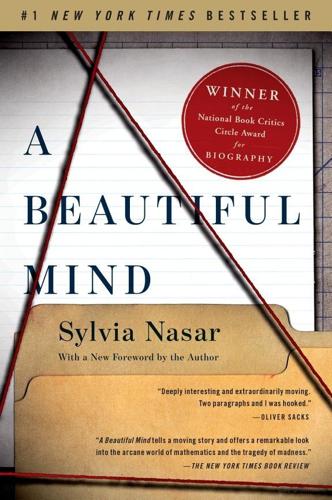
A Beautiful Mind
by
Sylvia Nasar
Published 11 Jun 1998
Nothing like the RAND of the early 1950s has existed before or since.2 It was the original think tank, a strange hybrid of which the unique mission was to apply rational analysis and the latest quantitative methods to the problem of how to use the terrifying new nuclear weaponry to forestall war with Russia — or to win a war if deterrence failed. The people of RAND were there to think the unthinkable, in Herman Kahn’s famous phrase.3 It attracted some of the best minds in mathematics, physics, political science, and economics. RAND may well have been the model for Isaac Asimov’s Foundation series, about a RANDlike organization full of hyper-rational social scientists — psychohistorians — who are supposed to save the galaxy from chaos.4 And Kahn and von Neumann, RAND’s most celebrated thinkers, were among the alleged models for Dr.
…
RAND bristled with self-confidence, a sense of mission, an esprit de corps.22 Military uniforms signaled visitors from Washington. Executives from defense firms came for meetings. The consultants, mostly under thirty, carried briefcases, smoked pipes, and walked around looking self-important. Big shots like von Neumann and Herman Kahn had shouting matches in the hallways.23 There was a feeling around the place of “wanting to outrun the enemy,” as a former RAND vice-president later put it.24 Arrow, who was an army veteran from the Bronx, said, “We were all convinced that the mission was important though there was lots of room for intellectual vision.”25 RAND’s sense of mission was propelled largely by a single fact: Russia had the A-bomb.
…
But despite a November 10, 1952, postcard to his parents telling them that he had applied for a higher clearance at RAND, Nash now says it was never approved — meaning that his role at RAND was largely confined to highly theoretical excercises as opposed to applications of game theory concepts to actual questions of nuclear strategy — the province of men like von Neumann, Herman Kahn, and Thomas Schelling.40 Everyone had a safe in his office for storing classified documents, and everyone was warned about taking documents out of the building or talking out of school.41 Papers had to be put in the safes at the end of every day. There were spot checks. There was a public address system and there were parts of the building that were off-limits to people who didn’t have a Q clearance.

Mysteries of the Mall: And Other Essays
by
Witold Rybczynski
Published 7 Sep 2015
This is a difficult subject, for, as he observes, “Americans are reluctant to discuss class distinctions in our culture, probably because we feel this would be undemocratic and adversarial.” This reluctance has produced euphemisms like “real people” and “ordinary folk” but no broad agreement on definitions of class. Only half jokingly, the late Herman Kahn once described America as a two-class society: those who hunted and those who didn’t. In Fear of Falling, Barbara Ehrenreich identified a relatively high-paid “professional” middle class that included managers and academics and that she estimated made up about 20 percent of the population. But she was not always consistent in her description of Middle America, which she sometimes referred to as the middle class and sometimes as the working class.
…
Pei: Building China Modern (Pei) Imperial War Museum (Manchester) Inc. magazine Indians of Virginia (Wooldridge) Industrial Revolution Inter-American Highway International Style Interstate Highway System cities and Isham, Ralph Isozaki, Arata Istanbul, Turkey Italianate I Tatti (Berenson villa) It’s a Wonderful Life (film) Izenour, Steven Jackson, John Brinckerhoff Jacobs, Jane James, Henry James Tait Black Memorial Prize Japan Jeanneret, Charles-Édouard, see Le Corbusier Jefferson, Thomas Jefferson Memorial, perimeter security at Jekyll, Gertrude Jensen, Knud W. Jerde, Jon Jerusalem Jewish Museum, Berlin Joan of Arc at the Stake (Honegger) John Hancock Tower, Boston Johnson, Alan Johnson, Julia Johnson, Philip Johnson Wax Building Jones, E. Fay Jones, Inigo Jones, Peter Justice Department, U.S. Kahn, Herman Kahn, Louis I. Dhaka capital complex of influence of Kimbell Art Museum of Salk Institute of Yale University Art Gallery of Kaptainis, Arthur Kaskey, Raymond Kaufmann, Edgar Kaufmann House, Palm Springs, Calif. Keats, John Kellogg Brown & Root Kelly, Ellsworth Kennedy, Anthony Kennedy Library, Boston Kent, William Killoren, Don Kimbell Art Museum, Fort Worth Kimmel Center for the Performing Arts, Philadelphia Kindred Spirits (Durand) Kingsgate footbridge, Durham, England Kings Point, N.Y.
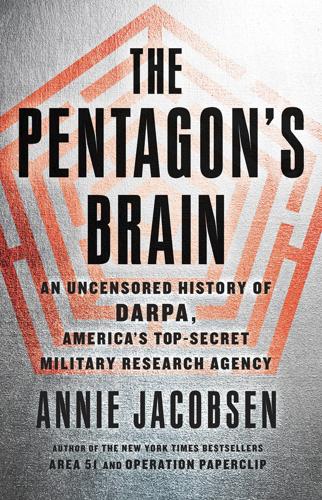
The Pentagon's Brain: An Uncensored History of DARPA, America's Top-Secret Military Research Agency
by
Annie Jacobsen
Published 14 Sep 2015
He also became a valuable interrogator, learning how to draw information out of captured prisoners, and to write intelligence reports. After the war, Gouré earned an undergraduate degree from New York University and a master’s degree from Columbia. In 1951 he became an analyst with RAND, and in no time he was working on post–nuclear war scenarios with the firm’s elite defense intellectuals, including Albert Wohlstetter and Herman Kahn. Gouré’s particular area of expertise was post-apocalypse civil defense, and in 1960 he traveled to Moscow on a civil defense research trip for RAND. In 1961 his findings were published as a book that caused a national outcry. Gouré claimed that during his trip to Moscow, he had seen firsthand evidence indicating that the Soviet Union had built a vast network of underground bunkers, which would protect the Russian people after a nuclear first strike against the United States.
…
Seel also Zasloff, The Role of North Vietnam in the Southern Insurgency; Donnell, Pauker, and Zasloff, Viet Cong Motivation and Morale in 1964: A Preliminary Report; Elliott, RAND in Southeast Asia: A History of the Vietnam War Era, Chapter Two. 10 “The original intent”: Deitchman, Best-Laid Schemes, 235. 11 deal with the CIA: Ahern, CIA and Rural Pacification in South Vietnam, 23. 12 inhabited by ghosts: Tela Zasloff, Saigon Dreaming, 164. 13 Most farmers: Elliott, 59. 14 What motivated Vietcong fighters: Interview with Joseph Zasloff, October 2014. 15 Pauker forwarded: Pauker, “Treatment of POWs, Defectors, and Suspects in South Vietnam,” 13. 16 “The motivation”: Press, “Estimating from Misclassified Data,” iii, 26. 17 identified by the Pentagon: McMaster, Dereliction, 143. 18 briefed General William Westmoreland: Interview with Joseph Zasloff, October 2014. 19 The insurgency: Quotes in this paragraph and the next are from Donnell, Pauker, and Zasloff, Viet Cong Motivation and Morale in 1964: A Preliminary Report. 20 other RAND officers: Interview with Joseph Zasloff, October 2014. 21 “I am looking for”: Elliott, 88. 22 elite defense intellectuals: Louis Menand, “Fat Man: Herman Kahn and the Nuclear Age,” New Yorker, June 27, 2005. 23 article attacking Gouré’s work: Harrison E. Salisbury, “Soviet Shelters: A Myth or Fact?” New York Times, December 24, 1961. 24 “I get red”: Interview with Joseph Zasloff, October 2014. 25 Brink Bachelor Officers Quarters: Karnow, 408–409. 26 “By and large”: Gouré, “Southeast Asia Trip Report, Part I: The Impact of Air Power in South Vietnam.” 27 “Gouré gave the Pentagon”: Interview with Joseph Zasloff, October 2014. 28 “break the backbone”: Elliott, 90; Gouré, JCS Briefing on Viet Cong Motivation and Morale, 7. 29 “Dan Ellsberg”: Hickey, Window, 179. 30 reports for ARPA: Gouré, “Some Findings of the Vietcong Motivation and Morale Study: June–December 1965,” 3. 31 copy of Gouré’s findings: Malcolm Gladwell, “Viewpoint: Could One Man Have Shortened the Vietnam War?”
…
Princeton Alumni Weekly, April 4, 2012. McFate, Montgomery. “Anthropology and Counterinsurgency: The Strange Story of Their Curious Relationship.” Military Review, March–April 2005: 24–38. ______. “The Military Utility of Understanding Adversary Culture.” Joint Force Quarterly, no. 38 (July 2005): 44–48. Menand, Louis. “Fat Man: Herman Kahn and the Nuclear Age,” New Yorker, June 27, 2005. Metz, Steven. “Non-Lethal Weapons: A Progress Report,” Joint Force Quarterly (Spring–Summer 2001): 18–22. Miles, Donna. “New Device Will Sense Through Concrete Walls.” Armed Forces Press Service, January 3, 2006. Miranda, Robbin A., et al. “DARPA-Funded Efforts in the Development of Novel Brain–Computer Interface Technologies,” Journal of Neuroscience Methods, Elsevier, Amsterdam, Netherlands, July 24, 2014: 1–17.
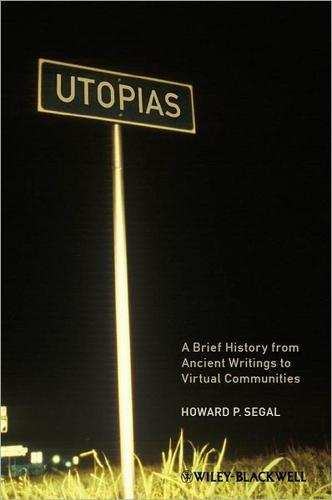
Utopias: A Brief History From Ancient Writings to Virtual Communities
by
Howard P. Segal
Published 20 May 2012
In recognizing what was later termed the “limits to growth,” Fuller was turning back to the outlook shared by most Americans throughout the eighteenth and early nineteenth centuries, prior to America’s own industrial revolution.7 His inventions accommoThe Future of Utopias and Utopianism 237 dated this reality, unlike some of his futurist contemporaries such as Herman Kahn and Julian Simon, who assumed that inventive humans would either discover natural resources in hitherto unexplored places or would readily create adequate substitutes.8 True, there was a temporary resurgence of faith in high-tech panaceas during the 1991 Persian Gulf War. Yet that infatuation with seemingly impersonal and sanitized high-tech weapons systems, especially the interestingly named “patriot missiles,” proved fleeting, especially once their actual performance was analyzed and found wanting.
…
The Future of Utopias and Utopianism 255 5 6 7 8 9 10 11 12 13 256 See Adam Robert Lucas, “Industrial Milling in the Ancient and Medieval Worlds: A Survey of the Evidence for an Industrial Revolution in Medieval Europe,” Technology and Culture, 46 (January 2005), 1–30. Jean Gimpel, The Medieval Machine: The Industrial Revolution of the Middle Ages (New York: Holt, Rinehart and Winston, 1976), 249. See Howard P. Segal, “Eighteenth-Century American Utopianism: From the Potential to the Probable,” Utopian Studies, 11 (2000), 5–13. See, for example, Herman Kahn, The Coming Boom: Economic, Political, and Social (New York: Simon and Schuster, 1982); Kahn et al., The Next 200 Years: A Scenario for America and the World (New York: Morrow, 1976); and Julian L. Simon, The Ultimate Resource (Princeton: Princeton University Press, 1981). On the questionable performance of high-tech weapons systems during the 1991 Persian Gulf War, see Howard P.
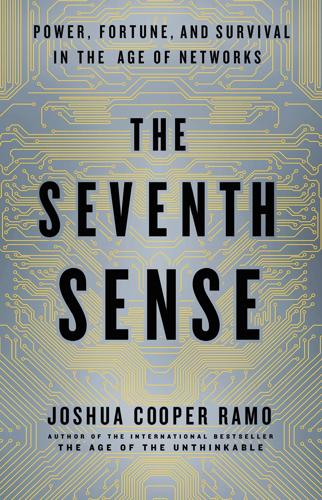
The Seventh Sense: Power, Fortune, and Survival in the Age of Networks
by
Joshua Cooper Ramo
Published 16 May 2016
This forty-five-year struggle occurred under the threat of nuclear disaster, which gave it something new in human history, the potential for complete destruction. It was possible to find sober-minded theorists pondering problems such as this one: “Assume that for, say, $10 billion we could build a device whose only function is to destroy all human life,” Herman Kahn wrote in the 1960s, with a spirit typical of his age in his worrisome masterpiece On Thermonuclear War. Yet in this period too, over time, America found itself in an axial role, first carrying one end of the risky fight and then, at the conflict’s surprising and jubilant conclusion, in 1989, discovering that it was in a position of unprecedented, unchallenged power.
…
“The boisterous sea of liberty”: Thomas Jefferson, The Papers of Thomas Jefferson, vol. 29, 1 March 1796 to 31 December 1797 (Princeton, NJ: Princeton University Press, 2002), 81–83. Eventually the entire world: John Maynard Keynes, from “The Economic Consequences of the Peace,” in The Essential Keynes, ed. Robert Skidelsky (London: Penguin Books, 2015). It was possible: Herman Kahn, On Thermonuclear War (Princeton, NJ: Princeton University Press, 1960). The sly aside: Jules Jusserand, quoted in George C. Herring, From Colony to Superpower: U.S. Foreign Relations Since 1776 (New York: Oxford University Press, 2008), 6. “You had to live”: George Orwell, 1984 (New York: Signet Classics, 1961), 3.
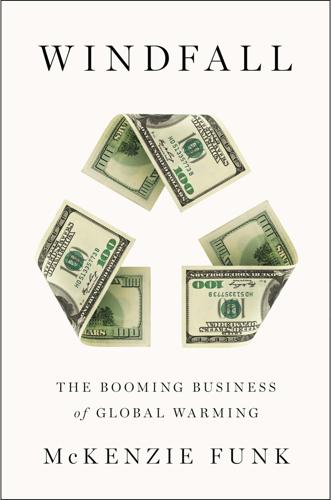
Windfall: The Booming Business of Global Warming
by
Mckenzie Funk
Published 22 Jan 2014
A scenario is not a forecast: Forecasts tend to assume that the future will be a continuation of the present, said Wack, and they are useless just when they are most crucial—when companies need to anticipate “major shifts in the business environment that make whole strategies obsolete.” Wack’s goal was to develop multiple versions of the future—an improvement on the scenario-planning technique he first learned from Herman Kahn, the pear-shaped contemplator of nuclear apocalypse at the Rand Corporation and Hudson Institute and perhaps the first person to call himself a futurist. “Herman Kahn was trying to get the future right—trying to get the one that was close to reality,” Schwartz told me. “Pierre was trying to influence the decisions we make today.” Rather than bet everything on a certain outcome, Wack had his oil company preparing to thrive no matter which version of the future came to pass.

Adapt: Why Success Always Starts With Failure
by
Tim Harford
Published 1 Jun 2011
The plane took a quarter of a century to enter service. The proliferation of iPhone and Android apps has hidden the uncomfortable truth, which is that innovation has become slower, harder and costlier, and in most areas we have fallen far short of the hopes of our predecessors. Flip through a report penned in 1967 by the influential futurist Herman Kahn, and you will discover that by the year 2000 we were expected to be flying around on personal platforms, curing hangovers with impunity and enjoying electricity that was too cheap to meter, beamed down from artificial moons. Kahn was no idle fantasist. He was accurate in his ideas about progress in communications and computing.
…
Sources: http://en.wikipedia.org/wiki/F-22_Raptor; Ben Rich & Leo Janos, Skunk Works (New York: Sphere, 1994), p. 350; Samuel H. Williamson, ‘Six ways to compute the relative value of a U.S. dollar amount, 1790 to present’, MeasuringWorth, 2009, http://www.mea-suringworth.com/uscompare/ 93 You will discover that by the year 2000: The Hudson Institute, The Year 2000: A Framework for Speculation on the Next 33 Years, Herman Kahn & Anthony J. Wiener (New York: Macmillan, 1967). John Kay first called my attention to Kahn & Wiener’s predictions. 94 The real winner of the vote was: http://www.economist.com/blogs/gulliver/2010/01/what_business_travellers_appreciate_most 94 The number of new drugs approved each year: Murray Aitken, Ernst R.

Smart Mobs: The Next Social Revolution
by
Howard Rheingold
Published 24 Dec 2011
After World War II, von Neumann joined other mathematicians and economists to brainstorm game theory at a mundane building that still houses the same institution near the Santa Monica beach. The RAND Corporation was the first think tank, where intellectuals with security clearances thought about the unthinkable, as RANDite Herman Kahn referred to the craft of thermonuclear war strategy.31 Because the arms race seemed to be closely related to the kind of bluff and counter-bluff described by game theory, the new field became popular among the first nuclear war strategists. In 1950, RAND researchers came up with four fundamental elements of Morgenstern- and von Neumann-style games: Chicken, Stag Hunt, Deadlock, and Prisoner’s Dilemma.
…
John von Neumann and Oskar Morgenstern, Theory of Games and Economic Behavior (Princeton: Princeton University Press, 1944). 29. William Poundstone, Prisoner’s Dilemma: John von Neumann, Game Theory, and the Puzzle of the Bomb (New York: Doubleday, 1992). 30. J. Bronowski, The Ascent of Man (Toronto: Little, Brown, 1973). 31. Herman Kahn, On Thermonuclear War (Princeton: Princeton University Press, 1960). 32. Jean-Jacques Rousseau, ADiscourse on Inequality (London: Penguin, 1984). 33. Merrill M. Flood, “Some Experimental Games,” Research Memorandum RM789 (Santa Monica, Calif.: RAND Corporation, 1952). 34. A. W. Tucker, “On Jargon: The Prisoner’s Dilemma,” UMAP Journal 1 (1950): 101. 35.
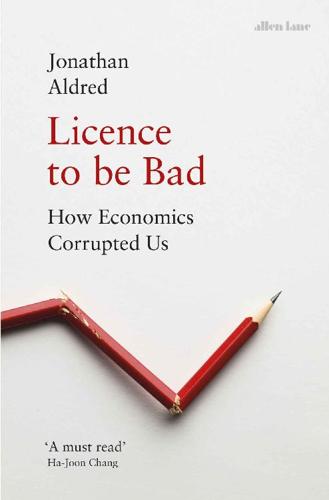
Licence to be Bad
by
Jonathan Aldred
Published 5 Jun 2019
Nuclear military technology was still in its infancy, and during the Second World War US generals had realized that they needed advice on the best way to deploy the latest weapons, from radar to long-range missiles, as well as the atom bomb. Such was the motivation for setting up RAND (an acronym for Research ANd Development) in 1948, initially as an offshoot of the Douglas Aircraft Corporation. RAND was described as ‘the Air Force’s big-brain-buying venture’.3 Its mission, in the words of influential RAND nuclear physicist Herman Kahn, was to ‘think the unthinkable’. The intellectual framework for all this nuclear strategizing was game theory. It was the perfect tool for the RAND style of military thinking. Game theory assumes that humans are purely selfish and hyper-rational, in possession not only of all the information relevant to making decisions but of perfect and exhaustive powers of computation and logical reasoning.
…
Painting a picture which could have come from the James Dean hit movie of the era, Rebel without a Cause, Russell imagined the US and the USSR as rival young drivers, speeding towards each other down the middle of a long, straight road. If neither swerved, both would die. But the first to swerve, the ‘Chicken’, would earn the everlasting contempt of his rival. Chicken soon became a benchmark game in discussions among Cold War thinkers, game theorists and their students. In 1960 RAND strategist Herman Kahn adopted Chicken as a game to describe the nuclear stand-off in his influential and bestselling 652-page tome, On Thermonuclear War. Russell questioned why playing Chicken for nuclear high stakes seemed morally acceptable in RAND circles, while teenagers playing Chicken for much lower stakes were criticized: As played by youthful plutocrats, the [Chicken] game is considered decadent and immoral, though only the lives of the players are risked.
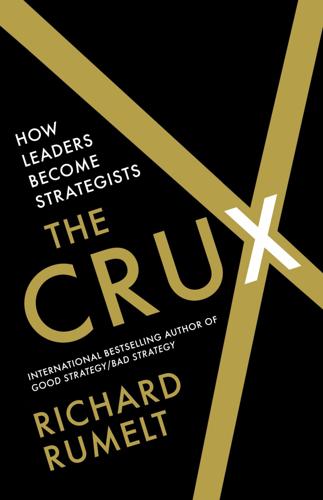
The Crux
by
Richard Rumelt
Published 27 Apr 2022
Mobile phones harnessed radio, integrated circuits, and the growing mastery over managing cellular networks. Layer after layer, branch after branch, electrical technologies built upon new science and, importantly, preexisting infrastructures. And the story is far from finished. These long waves can be observed but are hard to predict. I once participated in a “futures” forecasting exercise in 1967. Herman Kahn, the famous futurist, led the group. Scientists, business leaders, and a sprinkling of government people began to imagine what the world would look like in thirty years—2007. Barring a nuclear war, the group forecast that we could cure cancer, have colonies on Mars, have one-hour rocket-based travel from anywhere on the planet to anywhere else, have cheap clean energy from fusion, and, maybe, would achieve automatic language translation.
…
Many of these are systematized and explained in Daniel Kahneman’s fascinating book, Thinking, Fast and Slow.4 For senior executives the most important seem to be optimism bias, confirmation bias, and the inside-view bias. Optimism bias means that people tend to overestimate benefits and underestimate the costs of a plan or set of actions. This seems to be an inevitable outcome of basic “animal spirits.” I recall asking then futurist Herman Kahn about how to get unbiased forecasts. He advised: “Hire forecasters who are clinically depressed.” Confirmation bias means we tend to favor information, news, and statements that confirm already-held beliefs and opinions. If management believes they have the best technology in spinal disc replacement, they will tend to discount news of a small firm having a better approach.

Human Frontiers: The Future of Big Ideas in an Age of Small Thinking
by
Michael Bhaskar
Published 2 Nov 2021
There are drugs for those, but no one would say we have it nailed. Sure, we have video cassette players and home computers (remember those?), satellite TV, ‘extensive use of transplantation of human organs’ and ‘commercial extraction of oil from shale’. But it's hard not to feel that the authors, Herman Kahn and Anthony J. Wiener, anticipated something more radical and decisive. Years on from the millennium many, if not most, of their ‘very likely technical innovations’ have not been made despite the authors’ belief they would in ‘90–95 per cent’ of cases. What happened? And what does that tell us about the future?
…
We inherited a world seemingly better attuned to both the random mashups of the ideational process and the painstaking work of reaching a Eureka moment. All of this should raise expectations. Surely big ideas should arrive in an accelerating rush, accumulating ever faster, pushing at the frontier with increasing confidence. Like Herman Kahn and Anthony J. Wiener in the 1960s, surely we should expect great things and see massive breakthroughs not as miracles but as normal, a logical output from rising input. It's not unreasonable to expect a proportionality between the two. Likewise it is far from irrational to wonder why we have slower productivity growth, why recent research and technology yields less impact, why life expectancy, transport speed and a host of other measures from crops to computers to music and politics are not pushing back the frontier as they once did.
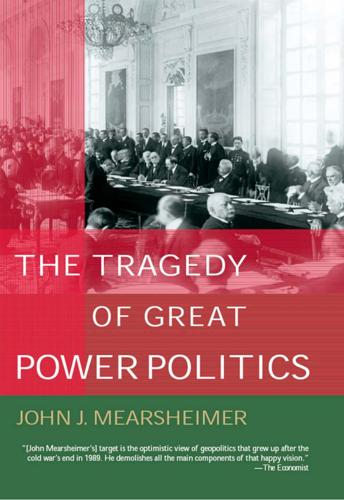
The Tragedy of Great Power Politics
by
John J. Mearsheimer
Published 1 Jan 2001
After listening to a Strategic Air Command (SAC) briefing on March 18, 1954, a U.S. navy captain used these words to describe what SAC planned to do to the Soviet Union in the event of war. David Alan Rosenberg, “’A Smoking Radiating Ruin at the End of Two Hours’: Documents on American Plans for Nuclear War with the Soviet Union, 1954–1955,” International Security 6, No. 3 (Winter 1981–82), pp. 11, 25. 131. Herman Kahn coined the phrase “splendid first strike,” which is synonymous with a disarming first strike. See Kahn’s On Thermonuclear War: Three Lectures and Several Suggestions, 2d ed. (New York: Free Press, 1969), pp. 36–37. 132. See Charles L. Glaser, Analyzing Strategic Nuclear Policy (Princeton, NJ: Princeton University Press, 1990), chap. 5. 133.
…
Blair, The Logic of Accidental Nuclear War (Washington, DC: Brookings Institution Press, 1993); and Scott D. Sagan, The Limits of Safety: Organizations, Accidents, and Nuclear Weapons (Princeton, NJ: Princeton University Press, 1993). On inadvertent nuclear escalation, see Posen, Inadvertent Escalation. On purposeful nuclear escalation, see Herman Kahn, On Escalation: Metaphors and Scenarios, rev. ed. (Baltimore, MD: Penguin, 1968); and Thomas Schelling, Arms and Influence (New Haven, CT: Yale University Press, 1966), chaps. 2–3. The best book on the general phenomenon of escalation is Richard Smoke, War: Controlling Escalation (Cambridge, MA: Harvard University Press, 1977), although it says little about escalation from the conventional to the nuclear level, or about escalation in a nuclear war. 139.
…
Martin’s, 1968), chap. 5; Darrell Bates, The Fashoda Incident: Encounter on the Nile (Oxford: Oxford University Press, 1984); and Roger G. Brown, Fashoda Reconsidered: The Impact of Domestic Politics on French Policy in Africa, 1893–1898 (Baltimore, MD: Johns Hopkins University Press, 1969). 37. Herman Kahn, On Thermonuclear War: Three Lectures and Several Suggestions, 2d ed. (New York: Free Press, 1960), p. 231; and Henry S. Rowen, “Catalytic Nuclear War,” in Graham T. Allison, Albert Carnesale, and Joseph S. Nye, Jr., eds., Hawks, Doves, and Owls: An Agenda for Avoiding Nuclear War (New York: Norton, 1985), pp. 148–63. 38.
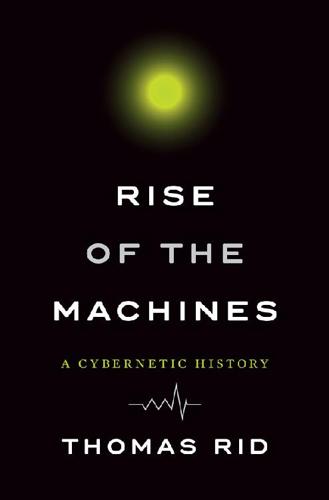
Rise of the Machines: A Cybernetic History
by
Thomas Rid
Published 27 Jun 2016
Wiener’s Palomilla; the ubiquitous expectations of ever-more-intelligent machines; the stories of the sorcerer’s apprentice and of the monkey’s paw—all this carried a powerful subtext: the machines were autonomous, they were getting more like us, they were unpredictable, and they were increasingly competing with their creators. One of the most remarkable articulations of this myth comes from Herman Kahn, one of America’s most celebrated strategic minds. In a notable book published in 1967, The Year 2000, Kahn made a number of bold, yet stunningly accurate, predictions about the end of the millennium. He foresaw the widespread use of nuclear reactors for power, new techniques for birth control, commercial oil extraction from shale, “pocket phones,” and the use of home computers.
…
Woirol, The Technological Unemployment and Structural Unemployment Debates (Westport, CT: Greenwood, 1996), 78. 75.David Fouquet, “Automation Held Threat to US Value Code,” Washington Post, May 12, 1964, A24. 76.Diebold, Beyond Automation, 10. 77.Fouquet, “Automation Held Threat.” 78.Diebold, Automation, 170. 79.Diebold, Beyond Automation, 206. 80.Kahn left Rand before publishing The Year 2000. 81.Herman Kahn and Anthony Wiener, The Year 2000: A Framework for Speculation on the Next Thirty-Three Years (London: Macmillan, 1967), 350. 4. ORGANISMS 1.Pesi Masani, Norbert Wiener, 1894–1964 (Basel: Burkhäuser, 1990), 225. 2.Paul E. Ceruzzi, A History of Modern Computing (Cambridge, MA: MIT Press, 2003), 21. 3.Masani, Norbert Wiener, 184. 4.John von Neumann to Norbert Wiener, November 29, 1946, in ibid., 243. 5.John von Neumann, Theory of Self-Reproducing Automata, ed.
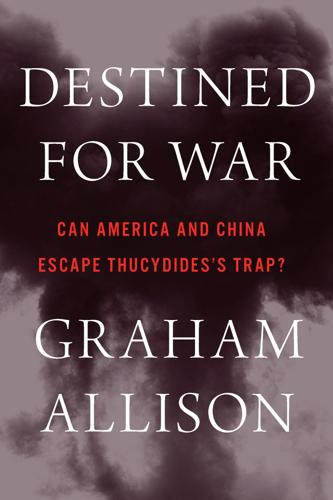
Destined for War: America, China, and Thucydides's Trap
by
Graham Allison
Published 29 May 2017
Hacking a military target, for example, could inadvertently disable a system used by a medical or financial complex. While American cyber commanders repeatedly affirm that in cyber offense, the US has the biggest rocks, they also acknowledge that the US lives in the glassiest house. In the 1960s, futurist Herman Kahn (one of the Cold War strategists parodied by Peter Sellers’s movie character Dr. Strangelove) proposed a 44-rung escalation ladder from “subcrisis maneuvering” up to full-scale nuclear war.27 Kahn’s first rung was the “ostensible crisis”—the spark. He explained that in a crisis, two powers would rarely proceed methodically and incrementally up the ladder.
…
“Kaspersky Lab Discovers Vulnerable Industrial Control Systems Likely Belonging to Large Organizations,” Kaspersky Lab, press release, July 11, 2016, http://usa.kaspersky.com/about-us/press-center/press-releases/2016/Kaspersky-Lab-Discovers-Vulnerable-Industrial-Control-Systems-Likely-Belonging-to-Large-Organizations. [back] 27. Herman Kahn, On Escalation: Metaphors and Scenarios (New York: Penguin, 1965), 39. [back] 28. Audrey Wang, “The Road to Food Security,” Taiwan Today, July 1, 2011, http://taiwantoday.tw/ct.asp?xItem=167684&CtNode=124; “Taiwan Lacks Food Security Strategy,” Taipei Times, July 26, 2010, http://www.taipeitimes.com/News/editorials/archives/2010/07/26/2003478832.

The State and the Stork: The Population Debate and Policy Making in US History
by
Derek S. Hoff
Published 30 May 2012
Friedrich Hayek sent Simon his only “fan letter to a professional colleague.”52 Simon became a senior fellow at the Heritage Foundation, where he helped shape the Reagan administration’s “neutral” position on population growth in the developing world and participated in the conservative critique of the environmental movement. (Reagan spoke the language of overpopulation in the 1960s, but, like so many conservatives, subsequently switched to the anti-Malthusian camp.)53 Simon also had links to such futurists as Herman Kahn, with whom he edited a book espousing the resourceoptimism position.54 By the 1980s, Simon’s ideas had become ingrained in the philosophy of leading conservative intellectuals. For instance, activist George Gilder summed up the new conservative mantra regarding population aged 229 population and the limits to growth in his well-known Wealth and Poverty (1981).
…
Today, they worry about the fiscal consequences of the Baby Boomers’ retirement in the next generation but rarely pause to consider the significant additional growth expected in the American population in the next century. 51. Julian L. Simon, The Ultimate Resource (Princeton: Princeton University Press, 1981). 52. The letter from Hayek to Simon, March 22, 1981, is reprinted in Simon, A Life Against the Grain, 268. 53. For Reagan and population, see Robertson, Malthusian Moment, chap. 9. 54. Julian L. Simon and Herman Kahn, eds., The Resourceful Earth: A Response to Global 2000 (New York: Basil Blackwell, 1984). 55. George Gilder, Wealth and Poverty (New York: Basic Books, 1981), 268. 56. Central Intelligence Agency, Directorate of Intelligence, Office of Political Research, “Potential Implications of Trends in World Population, Food Production, and Climate,” August 1974, chap. 4.

Army of None: Autonomous Weapons and the Future of War
by
Paul Scharre
Published 23 Apr 2018
Strategists have often compared crises to a game of chicken between two drivers, both hurtling toward the other one at deadly speed, daring the other to swerve. Neither side wants a collision, but neither wants to be the first to swerve. One way to win is to demonstrably tie one’s hands so that one cannot swerve. Herman Kahn gave the example of a driver who “takes the steering wheel and throws it out the window.” The onus is now entirely on the other driver to avoid a collision. Horowitz asked whether autonomous weapons might excel in such a situation. Here, machines’ rigid adherence to rules and lack of recallability would be a benefit.
…
Blanton, eds., “The Submarines of October,” The National Security Briefing Book, No. 75, October 31, 2002, http://nsarchive.gwu.edu/NSAEBB/NSAEBB75/. “The Cuban Missile Crisis, 1962: Press Release, 11 October 2002, 5:00 PM,” accessed June 17, 2017, http://nsarchive.gwu.edu/nsa/cuba_mis_cri/press3.htm. 311 game of chicken: Schelling, Arms and Influence, 116–125. Herman Kahn, On Escalation: Metaphors and Scenarios (New Brunswick and London: Transaction Publishers, 2010), 10-11. 311 “takes the steering wheel”: Kahn, On Escalation, 11. 312 “how would the Kennedy Administration”: Horowitz, “Artificial Intelligence, War, and Crisis Stability,” November. 312 “because of the automated and irrevocable”: Dr.

Animal Spirits: The American Pursuit of Vitality From Camp Meeting to Wall Street
by
Jackson Lears
The most prominent action intellectuals clustered at the RAND Corporation in Santa Monica, California. Among them was Albert Wohlstetter, who coined the phrase “the delicate balance of terror” in a RAND policy paper of 1958, and who consulted with John F. Kennedy during the Cuban Missile Crisis. The man who most fully elaborated the balance of terror was the RAND analyst Herman Kahn. His enormous girth made him anything but “wiry,” and he remained uncharacteristically confident (even among Cold War rationalists) about using rationality to manage the run-up to nuclear war—with the avowed purpose of ultimately preventing it. Others, such as Oskar Morgenstern, acknowledged the inevitability of computer error (as well as the dreaded “human error”) in what he called a “stochastic universe,” which was characterized at best by probability, if not outright uncertainty.
…
The inscription reads: “Out of a job, the attitude of utter dejection and submission to fate is all too strongly evident.” Photograph by George Miller, Jr., ca. 1930 (Museum of the City of New York) The Durham Family of Brooklyn, New York, Practices Civil-Defense Drills. Photograph by John Vachon for Look magazine, 1951 (Museum of the City of New York) Herman Kahn. Photograph by Thomas J. O’Halloran, 1965 (U.S. News & World Report Magazine Photograph Collection, Library of Congress Prints and Photographs Division) Norman Mailer, writer, gliding. Photograph by Bernard Gotfryd, 1967 (Bernard Gotfryd photograph collection, Library of Congress Prints and Photographs Division) Notes The page numbers for the notes that appear in the print version of this title are not in your ebook.
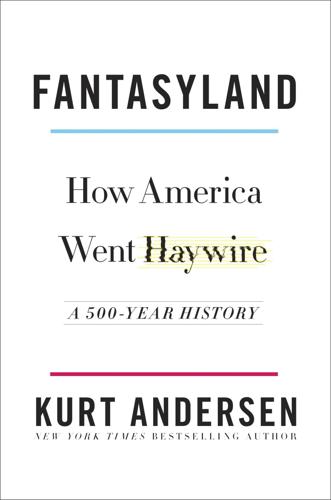
Fantasyland: How America Went Haywire: A 500-Year History
by
Kurt Andersen
Published 4 Sep 2017
The most important of McNamara’s whiz-kid assistant secretaries had been a senior figure at the RAND Corporation, the original postwar think tank and the fountainhead of systems analysis. The problem was that the crunched data and equations made systems analysis look like pure science, and its self-confident brainiac practitioners and their clients certainly believed it was a form of perfect superrationality. RAND’s most public figure was Herman Kahn, who was also the most influential promoter of the idea that nuclear war wouldn’t be so terrible. Kahn was a consultant to McNamara’s Defense Department as the United States prepared to intervene militarily in Southeast Asia. McNamara and Kahn envisioned beating back Communism in Vietnam as a matter of feeding variables through the Pentagon’s nifty new PPBS—that’s Planning, Programming and Budgeting System—which made waging and winning a modern war look like designing and manufacturing new and improved Fords.
…
But not that silly antique stuff with little models of ships and airplanes—now there were computers and game theory, with genius math underlying it all. Now wars that hadn’t even happened yet could be imagined and planned and “fought” in advance. The emotionlessness made it all seem even more rational. Herman Kahn’s RAND version of systems analysis, one of his biographers writes, amounted to “speculative fabrications” in which “Kahn’s science became science fiction.” War games were another entrancing and specifically American artifact in the 1960s that confused interesting fiction and the real thing. — ONE KIND OF logic was carried to fantastic extremes by the war makers, and then another kind of logic was carried to fantastic extremes by some of the war’s opponents.

Turing's Cathedral
by
George Dyson
Published 6 Mar 2012
I brought with me to Princeton all secret documents which we had with us in Aberdeen.”74 For sixty years, Monte Carlo has been applied to an ever-expanding range of problems, in fields from physics to biology to finance. The ability not only to follow but to create branching, evolving processes gives the code almost uncanny powers. “In a Monte Carlo problem the experimenter has complete control of his sampling procedure,” explained RAND mathematician and thermonuclear strategist Herman Kahn in 1954. “If for example he wanted a green-eyed pig with curly hair and six toes and this event had a non zero probability, then the Monte Carlo experimenter, unlike the agriculturalist, could immediately produce the animal.”75 Biological evolution is, in essence, a Monte Carlo search of the fitness landscape, and whatever the next stage in the evolution of evolution turns out to be, computer-assisted Monte Carlo will get there first.
…
Householder, ed., Monte Carlo Method, Proceedings of a Symposium held June 29, 30 and July 1, 1949, in Los Angeles, California, under the sponsorship of the RAND Corporation, and the National Bureau of Standards, with the cooperation of the Oak Ridge National Laboratory, National Bureau of Standards Applied Mathematics Series 12, issued June 11, 1951, p. 36. 72. A Million Random Digits with 100,000 Normal Deviates (Santa Monica, Calif.: RAND Corporation, 1955), p. xii. 73. Klára von Neumann to Stan Ulam, May 15, 1949, SUAPS. 74. Klára von Neumann to Carson Mark, June 28, 1949, KVN. 75. Herman Kahn, “Use of Different Monte Carlo Sampling Techniques,” in Meyer, ed., Symposium on Monte Carlo Methods, p. 147. ELEVEN: ULAM’S DEMONS 1. Ulam, January 14, 1974, in “Conversations with Gian-Carlo Rota.” 2. Ulam, Adventures of a Mathematician, p. 10; Françoise Ulam, “From Paris to Los Alamos”; Mitchell Feigenbaum, “Reflections of the Polish Masters: Interview with Stan Ulam and Mark Kac,” n.d., Los Alamos Science (Fall 1982): 57. 3.

Manias, Panics and Crashes: A History of Financial Crises, Sixth Edition
by
Kindleberger, Charles P.
and
Robert Z., Aliber
Published 9 Aug 2011
The crash began in January 1990 and became more intense when it became known that some major banks had made good losses on loans to favored customers and hidden these transactions by imaginative accounting.21 The euphoria in Japan was evident in many ways. There was a boom in corporate investments in plant and equipment. The vision in Herman Kahn’s The Emerging Japanese Superstate: Challenge and Response, published in 1970, appeared to be becoming reality.22 Japanese firms were preparing for a glorious global future. A construction boom followed: there was a real estate construction boom; several hundred new golf courses were built. A new office block next to the Tokyo railroad station was named ‘The Pacific Century Building’.
…
Masahiko Takeda and Philip Turner, ‘The Liberalization of Japanese Financial Markets: Some Major Themes’, BIS Economic Papers, no. 34 (November 1992), graph 8, p. 53. 19. Takeda and Turner, ‘Liberalization of Japanese Financial Markets’, pp. 99–121. 20. Ibid., Table A-1, pp. 120–1. 21. Ibid., pp. 58–65. Hamada calls the revelations ‘scandals’ (p. 9). 22. Herman Kahn, The Emerging Japanese Superstate: Challenge and Response (Englewood Cliffs, NJ: Prentice-Hall, 1970). 23. ‘Erosion in Japan’s Foundation: Real Estate Crash Threatens the Entire Economy’, New York Times, 4 October 1995. 24. David Asher and Andrew Smithers, ‘Japan’s Key Challenges for the 21st Century’, SAIS (School for Advanced International Studies) Policy Forum Studies, April 1998. 25.
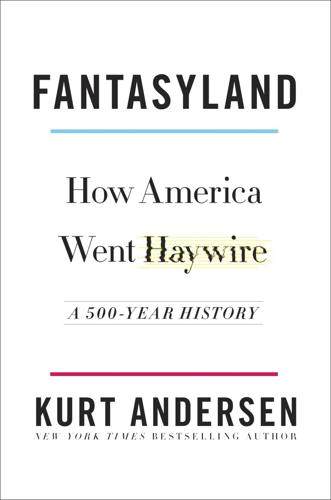
Fantasyland
by
Kurt Andersen
Published 5 Sep 2017
The most important of McNamara’s whiz-kid assistant secretaries had been a senior figure at the RAND Corporation, the original postwar think tank and the fountainhead of systems analysis. The problem was that the crunched data and equations made systems analysis look like pure science, and its self-confident brainiac practitioners and their clients certainly believed it was a form of perfect superrationality. RAND’s most public figure was Herman Kahn, who was also the most influential promoter of the idea that nuclear war wouldn’t be so terrible. Kahn was a consultant to McNamara’s Defense Department as the United States prepared to intervene militarily in Southeast Asia. McNamara and Kahn envisioned beating back Communism in Vietnam as a matter of feeding variables through the Pentagon’s nifty new PPBS—that’s Planning, Programming and Budgeting System—which made waging and winning a modern war look like designing and manufacturing new and improved Fords.
…
But not that silly antique stuff with little models of ships and airplanes—now there were computers and game theory, with genius math underlying it all. Now wars that hadn’t even happened yet could be imagined and planned and “fought” in advance. The emotionlessness made it all seem even more rational. Herman Kahn’s RAND version of systems analysis, one of his biographers writes, amounted to “speculative fabrications” in which “Kahn’s science became science fiction.” War games were another entrancing and specifically American artifact in the 1960s that confused interesting fiction and the real thing. — ONE KIND OF logic was carried to fantastic extremes by the war makers, and then another kind of logic was carried to fantastic extremes by some of the war’s opponents.

The Secret War Between Downloading and Uploading: Tales of the Computer as Culture Machine
by
Peter Lunenfeld
Published 31 Mar 2011
Chen, “Formal Approach to Scenario Analysis,” IEEE Software 11, no. 2 (1994):. 33–41. In marketing and design research, see Brenda Laurel, ed., Design Research: Methods and Perspective (Cambridge, MA: MIT Press, 2003). 19 . Here, I refer to the controversial mentor of the futurist/scenario community Herman Kahn, author of the cold warrior’s manual on scenario planning for nuclear conflict, Thinking about the Unthinkable (New York: Horizon, 1962). 191 NOTES 20 . Pierre Wack, “The Gentle Art of Reperceiving: Scenarios: Uncharted Waters Ahead,” Harvard Business Review (September–October 1985): 73–89; Pierre Wack, “The Gentle Art of Reperceiving: Scenarios: Shooting the Rapids,” Harvard Business Review (November–December 1985): 2–14; Kees van der Heijden, Scenarios: The Art of Strategic Conversation (Hoboken, NJ: John Wiley and Sons, 1996); James A.
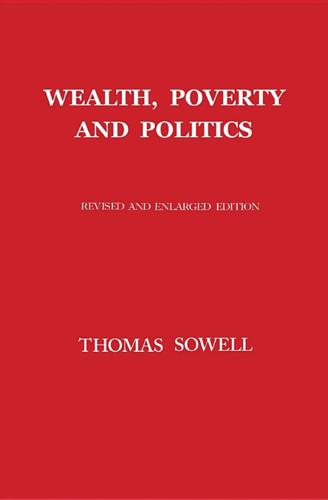
Wealth, Poverty and Politics
by
Thomas Sowell
Published 31 Aug 2015
It is hard to see how an undeserved cost inflicted on people in their role as consumers is morally different from an undeserved cost inflicted on people in their role as income recipients. On the international stage as well, preoccupation with “social justice,” defined as reductions of income and wealth gaps between nations, ignores the distinction— and the trade-off— between reducing these gaps and reducing poverty. Game theorist Herman Kahn presented the distinction incisively back in the 1970s: The increasing disparity between average incomes in the richest and poorest nations is usually seen as an unalloyed evil to be overcome as rapidly as possible through enlightened policies by the advanced nations and international organizations.
…
John Rawls, A Theory of Justice (Cambridge, Massachusetts: Harvard University Press, 1971), p. 73. 2. Ibid., p. 74. 3. Ibid., pp. 79–80. 4. Thomas Piketty, The Economics of Inequality, translated by Arthur Goldhammer (Cambridge, Massachusetts: Harvard University Press, 2015), pp. 1–2. 5. Ibid., p. 1. 6. John Rawls, A Theory of Justice, pp. 79–80, 82–83. 7. Herman Kahn, World Economic Development: 1979 and Beyond (Boulder, Colorado: Westview Press, 1979), pp. 60–61. 8. “Since about 1950, life expectancy at birth has increased 40 percent or more in many low-income countries. This remarkable achievement has, however, received all too little attention. The people of Western Europe and North America never attained so large an increase in life expectancy in so short a period.”

Collider
by
Paul Halpern
Published 3 Aug 2009
Only a few weeks after the Trinity test, bombs were dropped over Hiroshima and Nagasaki, leading to the devastation of those Japanese cities and the end of World War II. The dawn of the atomic age brought increased apprehension about the possibility that scientific miscalculation, combined perhaps with political blunders, would lead to Earth’s apocalyptic demise. It didn’t help matters that brilliant scientists such as Edward Teller and Herman Kahn would dispassionately discuss the effectiveness of new types of nuclear weaponry in scenarios involving mass casualties. In an era of trepidation, horror films provided a welcome release valve for anxiety. Fictional threats from aliens that could be warded off through concerted effort were easier to handle emotionally than factual dangers from ourselves that seemed to defy ready solution.
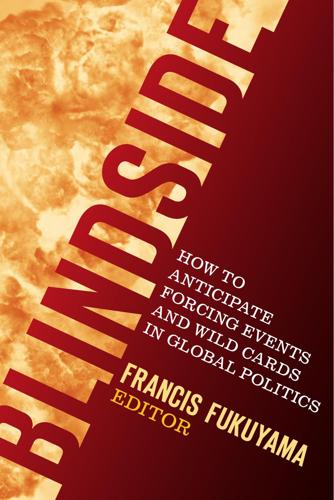
Blindside: How to Anticipate Forcing Events and Wild Cards in Global Politics
by
Francis Fukuyama
Published 27 Aug 2007
They may miss opportunities for bold action because they underestimate their ability to shape fluid events; they may be surprised because they fail to see signs the world has changed; or they may boldly bet on the wrong future, wasting their nation’s blood and treasure trying to exploit a tipping point that will not tip. Scenarios aim to overcome these problems by making it easier for decisionmakers to imagine a multiplicity of plausible futures. In the 1960s, futurist Herman Kahn first appropriated the Hollywood term scenarios to describe the stories he devised to help people think more seriously about the “unthinkable” consequences of a nuclear war. Today scenarios help their audiences embrace ambiguity by suspending disbelief, encouraging them to imagine the consequences of an often unwelcome or seemingly implausible future without requiring them to believe that future is likely to happen.
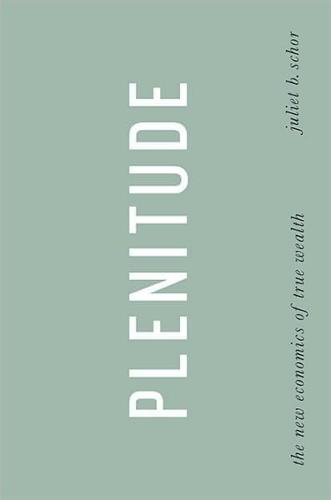
Plenitude: The New Economics of True Wealth
by
Juliet B. Schor
Published 12 May 2010
This is one legacy of the industrial-era view that producers can easily interchange machinery and human labor. If nature does have intrinsic value, it is as something to consume, rather than as an input into what we produce. We can buy more nature, but have to sacrifice income to do so. The strongest version of eco-optimism has been espoused by people such as Julian Simon, Herman Kahn, and Milton Friedman, and more recently Bjørn Lomborg. They’ve been dubbed Cornucopians, because they believe that there are no physical limits to growth. They predict the future holds unlimited riches via the wonders of population growth, which results in more smart people and more human ingenuity.

The Economic Singularity: Artificial Intelligence and the Death of Capitalism
by
Calum Chace
Published 17 Jul 2016
[cccliv] Planning We don’t have sufficient information to draw up detailed plans for the way we would like our economies and societies to evolve. But we can, and probably should, be doing detailed scenario planning. Scenario planning has been practised by military leaders since time immemorial. It was given the name by Herman Kahn, who wrote narratives about possible futures for the US military while working for the RAND Corporation in the 1950s. (His suggestion that a nuclear war might be both winnable and survivable made him one of the inspirations for Dr Strangelove in the classic 1964 movie.[ccclv]) Scenario planning was adopted by Shell Oil after it (along with the rest of the industry) was disastrously wrong-footed by the rise of the oil cartel OPEC in the 1970s.
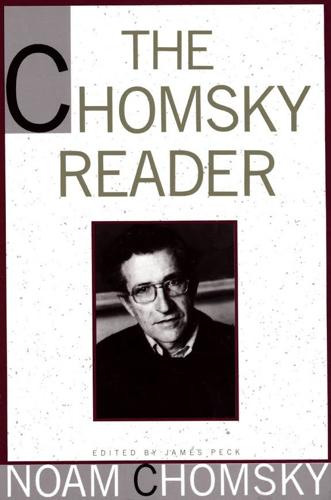
The Chomsky Reader
by
Noam Chomsky
Published 11 Sep 1987
Responsible, nonideological experts will give advice on tactical questions; irresponsible “ideological types” will “harangue” about principle and trouble themselves over moral issues and human rights, or over the traditional problems of man and society, concerning which “social and behavioral science” have nothing to offer beyond trivialities. Obviously, these emotional, ideological types are irrational, since, being well off and having power in their grasp, they shouldn’t worry about such matters. At times this pseudoscientific posing reaches levels that are almost pathological. Consider the phenomenon of Herman Kahn, for example. Kahn has been both denounced as immoral and lauded for his courage. By people who should know better, his On Thermonuclear War has been described “without qualification … [as] … one of the great works of our time” (Stuart Hughes). The fact of the matter is that this is surely one of the emptiest works of our time, as can be seen by applying to it the intellectual standards of any existing discipline, by tracing some of its “well-documented conclusions” to the “objective studies” from which they derive, and by following the line of argument, where detectable.
…
For example, one of Kahn’s basic assumptions is that “an all-out surprise attack in which all resources are devoted to counter-value targets would be so irrational that, barring an incredible lack of sophistication or actual insanity among Soviet decision-makers, such an attack is highly unlikely.” A simple argument proves the opposite. Premise 1: American decision-makers think along the lines outlined by Herman Kahn. Premise 2: Kahn thinks it would be better for everyone to be red than for everyone to be dead. Premise 3: If the Americans were to respond to an all-out counter-value attack, then everyone would be dead. Conclusion: The Americans will not respond to an all-out countervalue attack, and therefore it should be launched without delay.
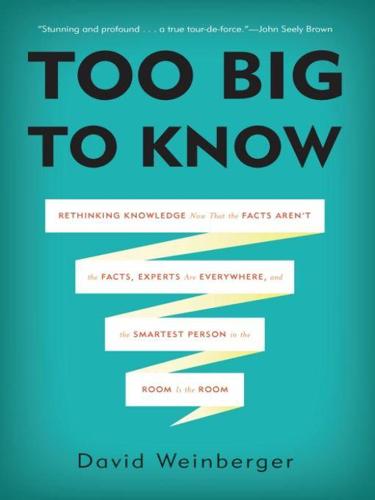
Too Big to Know: Rethinking Knowledge Now That the Facts Aren't the Facts, Experts Are Everywhere, and the Smartest Person in the Room Is the Room
by
David Weinberger
Published 14 Jul 2011
By the 1950s, the Defense Department was relying on the RAND Corporation to help figure out questions of global life and death, including how nuclear war might be waged “successfully” and thus what types of bombs to build. RAND (the name comes from “Research and Development”) gave us our modern image of the expert, and he looked like Herman Kahn. The egg-shaped Kahn made a career by (as the title of his best-selling book put it) Thinking the Unthinkable: how to win a nuclear war. This hyper-rational approach could recommend a nuclear arms strategy because it would kill “only” 10 million people. Kahn entered public awareness as an egghead cheerfully detached from the carnage he contemplated, and was ridiculed in Dr.

The New Class Conflict
by
Joel Kotkin
Published 31 Aug 2014
: How Public Employees Unions Are Raiding Treasuries, Controlling Our Lives and Bankrupting the Nation (Santa Ana, CA: Forum Press, 2009), pp. 3–11; Steven Greenhouse, “Labor Unions Claim Credit for Obama’s Victory,” The Caucus (blog), New York Times, November 7, 2012, http://thecaucus.blogs.nytimes.com/2012/11/07/labor-unions-claim-credit-for-obamas-victory; Roper Center, “Demographics of How Groups Voted 2012,” http://www.ropercenter.uconn.edu/elections/how_groups_voted/voted_12.html; OpenSecrets.org, “Heavy Hitters: Top All-Time Donors, 1989–2014,” http://www.opensecrets.org/orgs/list.php. 33. Chip Mellor, “An Intelligible Principle To Restrain Unelected Government Officials,” Forbes, May 16, 2011, http://www.forbes.com/2011/05/16/regulation-constitution-washington.html. 34. Herman Kahn, The Coming Boom: Economic, Political, and Social (New York: Simon and Shuster, 1982), pp. 188–89; Andrew Becker and G. W. Schulz, “Local Cops Ready for War With Homeland Security-Funded Military Weapons,” Daily Beast, December 21, 2011, http://www.thedailybeast.com/articles/2011/12/20/local-cops-ready-for-war-with-homeland-security-funded-military-weapons.html; Shaun Waterman, “Drones over U.S.
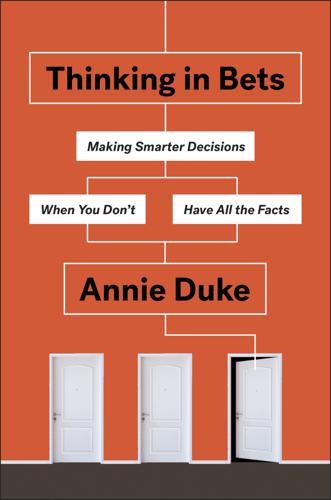
Thinking in Bets
by
Annie Duke
Published 6 Feb 2018
The influences behind the title character in Dr. Strangelove either are alluringly vague or differ based on who’s telling (or speculating). John von Neumann shared a number of physical characteristcs with the character and is usually cited as an influence. Others named as influences include Wernher von Braun, Herman Kahn, Edward Teller, and Henry Kissinger. Except for Kissinger, who was a relatively obscure Harvard professor when the film was made, these are all conceivable models. The influence of John von Neumann on game theory, and of game theory on modern economics, is unquestioned. At least eleven Nobel laureates in economics have been cited for their work connected with or influenced by game theory.
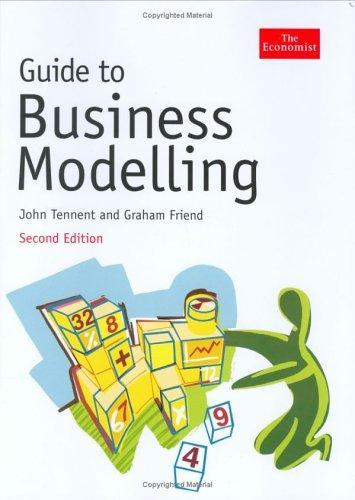
Guide to business modelling
by
John Tennent
,
Graham Friend
and
Economist Group
Published 15 Dec 2005
So an alternative approach to forecasting is required, which must be flexible and able to accommodate drastically different operating environments. 20 4. UNCERTAINTY, SCENARIO PLANNING AND MODEL INPUTS A SCENARIO-BASED FORECASTING APPROACH Scenario-based forecasting provides a structured approach for thinking about uncertainty. The development of scenario planning can be attributed to Herman Kahn, who worked for the rand Corporation in the 1950s. The approach was formalised by Shell during the 1970s, and its use has become increasingly pervasive in recent years in response to the dramatic changes that many industries and businesses must now contend with. For a more detailed understanding of scenario-based forecasting techniques, Learning from the future: Competitive Foresight Scenarios is an excellent reference.1 Scenarios are pictures, painted in words, of vividly different, contrasting and relevant environments in which the business may have to operate.
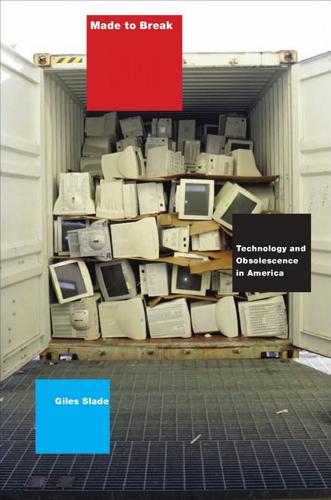
Made to Break: Technology and Obsolescence in America
by
Giles Slade
Published 14 Apr 2006
He shared the apprehensions of other Jews during the era of the Red Spy Queen scandal and the trial of Julius Rosenberg—events that helped shape his dogged patriotism.Weiss would go on to become a vigilant and pragmatic Soviet watcher who never forgot that the USSR had been aggressively spying on America since World War II. After completing an economics degree at Vanderbilt, Weiss studied for an MBA at Harvard and later taught economics at New York University. In the mid 1960s he joined the Hudson Institute and became a colleague of Herman Kahn, himself a cold war original who had “thought about the unthinkable” and put it all down in his chillingly popular analysis,On Thermonuclear War (1961). Kahn was one of two men who inspired Stanley Kubrick’s character Dr. Strangelove in the fil of the same name (the other was Edward Teller). After Nixon became president in 1969, Weiss joined the White House’s Council on International Economic Policy.
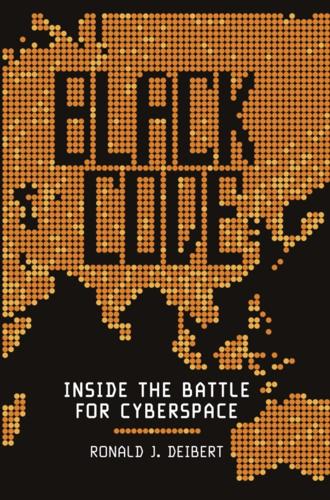
Black Code: Inside the Battle for Cyberspace
by
Ronald J. Deibert
Published 13 May 2013
Because the U.S. has a military alliance with Taiwan and Japan, in the event of a regional war – say, over Taiwan or the disputed islands of the South China Sea – the People’s Liberation Army would be hard pressed not to deploy its cyber warfare assets to confuse, deter, and even disable American military and civilian assets. As the Stuxnet worm aptly demonstrated in 2010, a menacing virus or trojan horse can be used to sabotage critical infrastructure. Such an attack would invariably provoke a wider response from the U.S., which now defines a cyber attack as an act of war. As security strategist Herman Kahn noted about the Cold War, this can be described as an “escalation ladder,” one step leading to another, further and further into an armed imbroglio that neither side fully controls or desires. Part of China’s international strategy revolves around the setting of technical standards, like those relating to wif protocols.
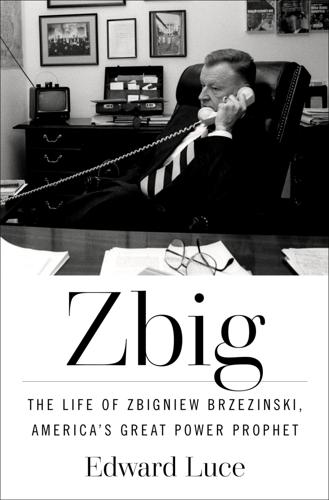
Zbig: The Life of Zbigniew Brzezinski, America's Great Power Prophet
by
Edward Luce
Published 13 May 2025
Brzezinski’s was notable for its absence of gloom. “One of the most original books on political and social thought to appear in recent years,” wrote Harvard historian John G. Stoessinger in Foreign Affairs. “This seminal work is bound to elicit major controversy and will be difficult to ignore.”27 Others were less respectful: “A mishmash of Herman Kahn [a renowned American futurist] and Marshall McLuhan [the influential Canadian philosopher],” said one reviewer.28 All of them ignored Brzezinski’s core point. His book’s real target was the Soviet Bloc. If America was the world’s revolutionary force, the USSR was a conservative backwater. Soviet statistics made a mockery of Lenin’s claim to be in the vanguard of history.
…
In a few impressionistic brushstrokes he then proceeded to make mincemeat of the increasingly fashionable view that Japan was the world’s coming superpower. His short book did not explicitly mention a current US best seller, The Emerging Japanese Superstate: Challenge and Response. The book, written by the futurologist Herman Kahn, predicted that Japan would be the world’s number one economy by the year 2000. In Brzezinski’s view, Japan’s economic miracle was already waning and its growth would decline sharply in the near future. He also disputed the widespread claim that Japan was on the cusp of becoming a nuclear power.
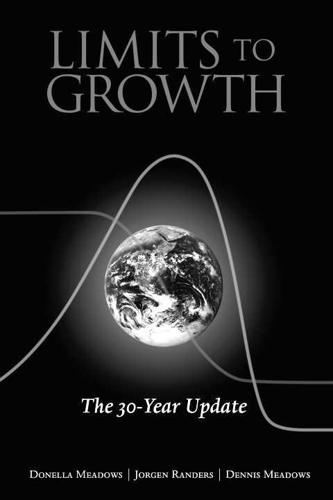
The Limits to Growth: The 30-Year Update
by
Donella H. Meadows
,
Jørgen Randers
and
Dennis L. Meadows
Published 15 Apr 2004
The most probable result will be a rather sudden and uncontrolled decline in both population and industrial capacity." How the critics responded: "With current and near current technology, we can support 15 billion people in the world at twenty thousand dollars per capita for a millennium-and that seems to be a very conservative statement." -Herman Kahn "The material conditions of life will continue to get better for most people, in most countries, most of the time, indefinitely. Within a century or two, all nations and most of humanity will be at or above today's Western living standards." -Julian Simon The emerging consensus today: "Human beings and the natural world are on a collision course.

Everything Is Obvious: *Once You Know the Answer
by
Duncan J. Watts
Published 28 Mar 2011
In particular, he recommends that planners look for ways to integrate what he calls strategic uncertainty—uncertainty about the future of the business you’re in—into the planning process itself. Raynor’s solution, in fact, is a variant of a much older planning technique called scenario planning, which was developed by Herman Kahn of the RAND Corporation in the 1950s as an aid for cold war military strategists. The basic idea of scenario planning is to create what strategy consultant Charles Perrottet calls “detailed, speculative, well thought out narratives of ‘future history.’ ” Critically, however, scenario planners attempt to sketch out a wide range of these hypothetical futures, where the main aim is not so much to decide which of these scenarios is most likely as to challenge possibly unstated assumptions that underpin existing strategies.18 In the early 1970s, for example, the economist and strategist Pierre Wack led a team at Royal Dutch/Shell that used scenario planning to test senior management’s assumptions about the future success of oil exploration efforts, the political stability of the Middle East, and the emergence of alternative energy technologies.

The Big Nine: How the Tech Titans and Their Thinking Machines Could Warp Humanity
by
Amy Webb
Published 5 Mar 2019
That second half, more formally, is called “scenario planning” and develops scenarios about the future using a wide variety of data across numerous sources: statistics, patent filings, academic and archival research, policy briefings, conference papers, structured interviews with lots of people, and even critical design and speculative fiction. Scenario planning originated at the start of the Cold War, in the 1950s. Herman Kahn, a futurist at the RAND Corporation, was given the job of researching nuclear warfare, and he knew that raw data alone wouldn’t provide enough context for military leaders. So instead, he created something new, which he called “scenarios.” They would fill in the descriptive detail and narration needed to help those in charge of creating military strategy understand the plausible outcomes—that is, what could happen if a certain set of actions were taken.
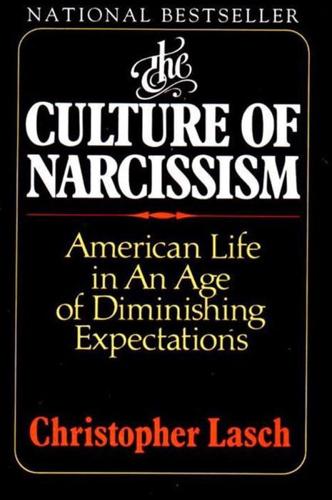
The Culture of Narcissism: American Life in an Age of Diminishing Expectations
by
Christopher Lasch
Published 1 Jan 1978
Medical research could hope " " merely " to make it take, say, seventy years to reach today ' s By associating this "disquiet" -wiih sentimental humanitarianism and superstitious resistance toWientific progress these , publicists pose as hardheaded realists filling to "think the unthinkable " , as another futurologist, Herman Kahn once put it , when he tried to reconcile mankind to the prospect of nuclear war. The prophets of prolongevity tak 1pride in their ability to confront forbidding questions Woukf society stagnate if death lost its sting? Would people avoid risk devoting all their energies merely to staying alive?
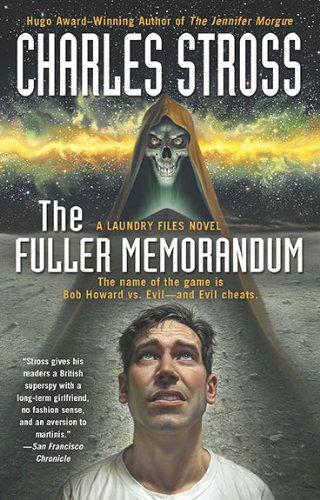
Fuller Memorandum
by
Stross, Charles
Published 14 Jan 2010
I have accordingly put CO15 on notice to provide escort and routing." CO15 is the Traffic Operational Command Unit of the London Metropolitan Police. "MAGINOT BLUE STARS are in the loop and ready to provide covering fire if we need to go above Rung Five." The notional ladder of escalation's rungs are denominated in steps looted from Herman Kahn's infamous theory of strategic conflict: in a good old-fashioned war, Rung Five would mark the first exchange of tactical nuclear weapons. "Is it that bad?" Boris asks, needy for reassurance. Even old war horses sometimes balk in the face of a wall of pikes. "Potentially." Angleton stops finger-tapping.

The Age of Surveillance Capitalism
by
Shoshana Zuboff
Published 15 Jan 2019
Or a day-care center drop-off on the way to work? A mother on life support in the hospital still miles away? A son waiting to be picked up at school? It was not long ago that Varian’s prosaic proclamations were regarded as the stuff of nightmares. In his 1967 book The Year 2000 the hyper-rational wunderkind futurist Herman Kahn anticipated many of the capabilities that Varian now assigns to the new extraction/execution architecture.55 Kahn was no shrinking violet. He was rumored to be director Stanley Kubrick’s model for the title character in Dr. Strangelove, and he was well-known for arguing that nuclear war is both “winnable” and “survivable.”
…
Advertising Age, December 15, 2014, http://adage.com/article/digital/owns-dashboard-apple-google-automakers/296200. 52. “Google Looks to Partner with Insurance Companies in France,” Fortune, September 13, 2016, http://fortune.com/2016/09/13/google-france-insurance-partners. 53. Varian, “Beyond Big Data,” 30 (italics mine). 54. Varian. 55. Herman Kahn and Anthony J. Wiener, The Year 2000 (New York: Macmillan, 1967). 56. Kahn and Wiener, The Year 2000, 97–98. 57. Kahn and Wiener, 410–11. 58. Paul T. David and William R. Ewald, “The Study of the Future,” Public Administration Review 28, no. 2 (1968): 187–93, https://doi.org/10.2307/974089. 59.

Nerds on Wall Street: Math, Machines and Wired Markets
by
David J. Leinweber
Published 31 Dec 2008
Emanuel Derman, “Finance by the Numbers,” Wall Street Journal, August 22, 2007. 3. Much of Steven Levy’s 1984 book Hackers: Heroes of the Computer Revolution (Doubleday) takes place in the PDP-1 lab at MIT. Hacking had no criminal connotation at the time. The book is still in print. 4. Start with Herman Kahn’s On Thermonuclear War (Princeton, NJ: Princeton University Press, 1960) for a weighty tome, or “How RAND Invented the Postwar World,” by Virginia Campbell, in Invention & Technology magazine (Summer 2004) for a much more compact read. 5. Thanks to John Wiley & Sons for including this tribute to Kevin Lewis.Yes, it has nothing to do with finance, but this is shaping up as a year when we can all use a laugh.

The Ascent of Money: A Financial History of the World
by
Niall Ferguson
Published 13 Nov 2007
In 1975 just 9 per cent of national income went on social security, compared with 31 per cent in Sweden.49 The burden of tax and social welfare was roughly half that in England. Run on this basis, the welfare state seemed to make perfect sense. Japan had achieved security for all - the elimination of risk - while at the same time its economy grew so rapidly that by 1968 it was the second largest in the world. A year before, Herman Kahn had predicted that Japan’s per capita income would overtake America’s by 2000. Indeed, Nakagawa Yatsuhiro argued that, when fringe benefits were taken into account, ‘the actual income of the Japanese worker [was already] at least three times more than that of the American’.50 Warfare had failed to make Japan Top Nation, but welfare was succeeding.
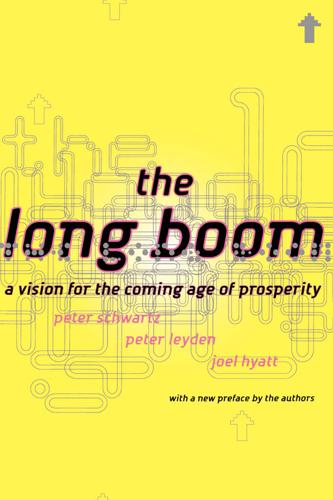
The Long Boom: A Vision for the Coming Age of Prosperity
by
Peter Schwartz
,
Peter Leyden
and
Joel Hyatt
Published 18 Oct 2000
Those who were especially helpful include Eric Drexler, founder of the Foresight Institute; Amory Lovins, of the Rocky Mountain Institute; Bo Ekman, Chairman of Nextwork; Danny Hillis, Disney Fellow; Doug Carlston, founder of Broderbund Software; and Brian Eno, musician and artist. Individuals from several GBN member companies were especially supportive of the ideas: Johan nic Void of Statoil, Goren Lindahl of ABB, the European-based energy firm, Doug Glen of Mattel, and Goren Collert of Swedbank. Herman Kahn and Pierre Wack have been especially important inspirations in the scenario work of GBN and in the ideas in the Long Boom scenario. Kahn wrote of the long-term multifold trend in the sixties, and Wack first published his Belle Epoque scenario in the seventies; both of these were precursors of the concept of the Long Boom.

Radical Technologies: The Design of Everyday Life
by
Adam Greenfield
Published 29 May 2017
Celia Hatton, “China ‘Social Credit’: Beijing Sets Up Huge System,” BBC News, October 26, 2015, bbc.co.uk; see also State Council of the People’s Republic of China, “Planning Outline for the Construction of a Social Credit System (2014–2020),” June 14, 2014, chinacopyrightandmedia.wordpress.com/2014/06/14/planning-outline-for-the-construction-of-a-social-credit-system-2014-2020/. 22.Andrew Youderian, “Alibaba vs. Amazon: An In-Depth Comparison of Two eCommerce Giants,” eCommerceFuel, October 24, 2014. 23.“World’s Most Admired Companies 2016,” Fortune, February 29, 2016. 24.Angela Wilkinson and Roland Kupers, “Living in the Futures,” Harvard Business Review, May 2013; see also Herman Kahn and Anthony J. Wiener, “The Use of Scenarios,” in The Year 2000: A Framework for Speculation on the Next Thirty-Three Years, New York: Macmillan, 1967. 25.K. Eric Drexler, “Machines of Inner Space,” Encyclopædia Britannica 1990 Yearbook of Science and the Future, Chicago: Encyclopædia Britannica, 1989, pp. 160–77. 26.Nick Hall, “Building with Robots and Recycled Plastic,” 3D Printing Industry, August 16, 2016, 3dprintingindustry.com/news/building-robots-recycled-plastic-93901/. 27.Navi Radjou, Jaideep Prabhu and Simone Ahuja, “Use Jugaad to Innovate Faster, Cheaper, Better,” Harvard Business Review, November 8, 2011. 28.Shira Springer, “Embracing Gambiarra in Brazil,” Boston Globe, August 12, 2016. 29.Brian W.

The Innovation Illusion: How So Little Is Created by So Many Working So Hard
by
Fredrik Erixon
and
Bjorn Weigel
Published 3 Oct 2016
The British economist John Maynard Keynes had previously expressed a similar sentiment, arguing that technological development would result in an abundance of leisure time as Westerners would only have to work 15 hours a week.8 Bellman went much further and predicted that his 2 percent scenario would happen within 25 years from the time of writing, and would be more likely to occur within 10 years.9 Futurist Herman Kahn – the founder of the Hudson Institute, and famous for inspiring Kubrick’s character of Dr. Strangelove – belonged to a moderate group that estimated that Western economies would move to a four-day working week and 13 weeks of vacation.10 It was all perceived to be very serious, especially as the age featured its own version of the “average is over” thesis, contending that everyone with just “average” performance would be demoted to permanently low economic expectations.
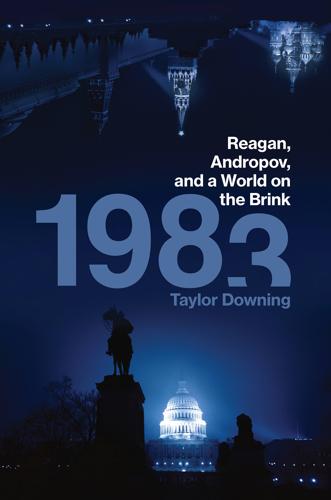
1983: Reagan, Andropov, and a World on the Brink
by
Taylor Downing
Published 23 Apr 2018
He concludes that the intelligence supplied by science spies like Klaus Fuchs, the German-born British physicist who had been part of the Manhattan Project, was useful to the Soviets but probably only brought things forward by a few months. The development of Soviet atomic technology was primarily limited by the ability to mine and process uranium ore. Overall he argues the speed of the development of the Soviet atom bomb was remarkable. 7 The nuclear strategist was Herman Kahn in On Thermonuclear War. 8 Lawrence Freedman, The Evolution of Nuclear Strategy, p.235. 9 Jeremy Isaacs and Taylor Downing, Cold War, pp.161–83. 10 It was this scenario that Stanley Kubrick satirised in his black comedy movie Dr Strangelove, Or: How I Learned to Stop Worrying and Love the Bomb (1964) in which an American air base commander goes berserk and issues the go-codes for his B-52s to launch a nuclear attack on the Soviet Union.
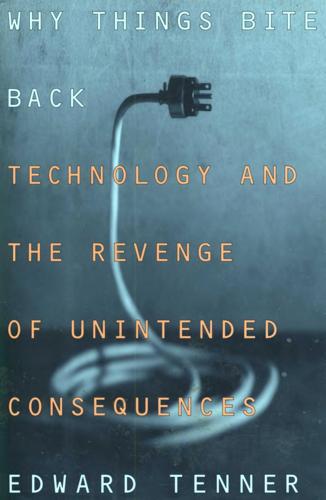
Why Things Bite Back: Technology and the Revenge of Unintended Consequences
by
Edward Tenner
Published 1 Sep 1997
Interest is thus a strange thing. People who spend their time analyzing numbers for a living find their recreation incomplete without a steady flow of numbers to analyze." But if Higdon is right, they are not so fanatical about the accuracy of those numbers; they would rather have from time to time what the late Herman Kahn called a "warm human error." In fact, few professional sports still use instant video replays to help make or verify official decisions. The NFL dropped it in 1992. Officials resented its challenge to their authority and decisiveness; fans and broadcasters resented the time it added to games. The video record may well turn out to be as controversial as whatever memories the officials and spectators may have of the original call—as the Rodney King and Reginald Denny cases showed in very different contexts in the courtroom.
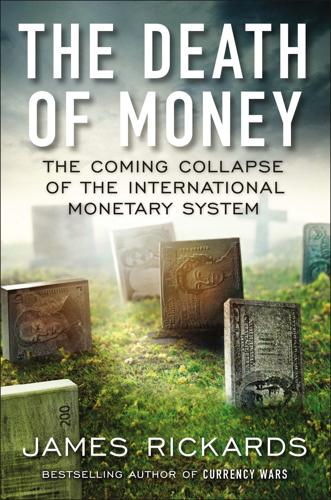
The Death of Money: The Coming Collapse of the International Monetary System
by
James Rickards
Published 7 Apr 2014
Unofficially he is the Pentagon’s chief futurist, the man responsible for looking over the horizon and assessing threats to U.S. national security long before others even know they exist. Marshall has held this position since 1973, through eight presidential administrations. His involvement in national security strategy goes back even further, to 1949, when he joined the RAND Corporation, the original think tank. The list of his former associates and protégés includes Herman Kahn, James Schlesinger, Don Rumsfeld, Dick Cheney, Paul Wolfowitz, and other giants of national security policy over eight decades. Only the late Paul Nitze is comparable to Marshall in terms of the depth and breadth of his influence on strategic affairs in the period since World War II. If Marshall is less known to the general public than the figures to whom he is compared, that is quite by design.

Smart Cities: Big Data, Civic Hackers, and the Quest for a New Utopia
by
Anthony M. Townsend
Published 29 Sep 2013
In the early 1960s, the nuclear arms race between the United States and the Soviet Union entered a new and alarming phase. At first, American strategy was based on deterrence. By matching Soviet buildup, the United States could ensure that nuclear war would cause such total annihilation that it would be an unthinkable option for the enemy. But some thinkers, led by Herman Kahn at RAND, didn’t buy the “mutually assured destruction” doctrine. In a controversial 1962 treatise, titled Thinking About the Unthinkable, published after he left RAND to found his own group, the Hudson Institute, Kahn argued that not only was a nuclear war winnable, but “the living would not envy the dead” as conventional thinking held.71 Many, if not most of the population, would survive.

Computer: A History of the Information Machine
by
Martin Campbell-Kelly
and
Nathan Ensmenger
Published 29 Jul 2013
In yet another example of his widespread, polymathic influence, John von Neumann, this time in his role as the developer of modern game theory, would provide the tools for economists to reconceptualize their discipline in terms of systems of information exchange and processing. And in policy circles, the systems theorist Herman Kahn would pioneer the application of game theory and computer simulation to the geopolitics of thermonuclear war. Against the backdrop of late 1950s Cold War tensions, Kahn and his colleagues at the RAND Corporation developed computerized war games to “simulate the unthinkable.” The use of computer games to model complex social phenomena, having soon transcended the walls of the RAND Corporation and the Pentagon, was eventually applied to political analysis, policy formation, and city planning.
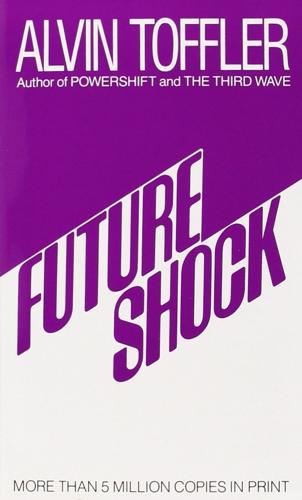
Future Shock
by
Alvin Toffler
Published 1 Jun 1984
This is a new fact in history. In the past, culture emerged without premeditation. Today, for the first time, we can raise the process to awareness. By the application of conscious technological policy— along with other measures—we can contour the culture of tomorrow. In their book, The Year 2000, Herman Kahn and Anthony Wiener list one hundred technical innovations "very likely in the last third of the twentieth century." These range from multiple applications of the laser to new materials, new power sources, new airborne and submarine vehicles, three-dimensional photography, and "human hibernation" for medical purposes.
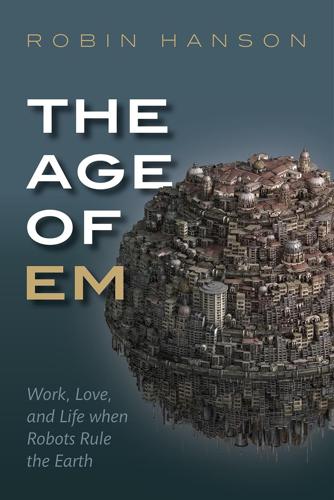
The Age of Em: Work, Love and Life When Robots Rule the Earth
by
Robin Hanson
Published 31 Mar 2016
This was true separately for forecasts made via many different methods. On average, these milestones tended to be passed a few years before their forecasted date, and sometimes forecasters were unaware that they had already passed (Charbonneau et al. 2013). A particularly accurate book in predicting the future was The Year 2000, a 1967 book by Herman Kahn and Anthony Wiener (Kahn and Wiener 1967). It accurately predicted population, was 80% correct for computer and communication technology, and 50% correct for other technology (Albright 2002). On even longer time scales, in 1900 the engineer John Watkins did a good job of forecasting many basic features of society a century later (Watkins 1900).

The Precipice: Existential Risk and the Future of Humanity
by
Toby Ord
Published 24 Mar 2020
For example, NORAD reported that false alarms led to six Threat Assessment Conferences and 956 Missile Display Conferences even just in the five years from January 1978 to May 1983 (Wallace, Crissey & Sennott, 1986). 27 Brezhnev (1979); Gates (2011); Schlosser (2013). 28 Reports differ on whether there were five missiles shown, or just a single missile (with four more appearing in a second event later that night). 29 Lebedev (2004); Schlosser (2013); Chan (2017). 30 Forden, Podvig & Postol (2000); Schlosser (2013). 31 Feld (1976) estimates that a one-megaton warhead can irradiate an area of roughly 2,500 km2 with a lethal dose, implying one would need at least 60,000 such weapons to irradiate the Earth’s land area. This significantly exceeds current stockpiles of around 9,000 deployed warheads, which have an average yield considerably below one megaton. 32 Such a “doomsday device” was first suggested by Leo Szilard in 1950 and its strategic implications were more fully developed by Herman Kahn (Bethe et al., 1950). A cobalt bomb (or similar salted weapon) plays a major role in the plots of On the Beach and Dr. Strangelove, taking nuclear war in both cases from a global catastrophe to an extinction threat. The greatest obstacle to destroying all of humanity with such a weapon is ensuring that lethal radiation is distributed evenly across the Earth, particularly when taking into account shelters, weather and oceans.
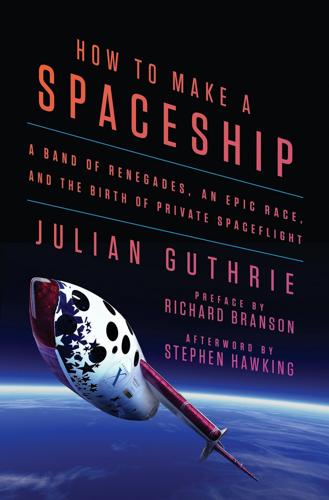
How to Make a Spaceship: A Band of Renegades, an Epic Race, and the Birth of Private Spaceflight
by
Julian Guthrie
Published 19 Sep 2016
He also invented a mass driver to move materials mined on the Moon into Earth orbit. *The ARPANET was the first packet-switched network. Packet-switched networks were the work of many hands: Leonard Kleinrock (UCLA) and Paul Baran (RAND), as well as Bob Kahn (DARPA), who is related to futurist and nuclear strategist Herman Kahn, and Vint Cerf, who connected with Kleinrock at UCLA, worked with Kahn at DARPA, and works at Google. ARPANET was all about breaking down messages into little self-contained packets like postcards that have a “from” and “to” address and can shuttle through a heterogeneous network of cooperating computers.

Evil Geniuses: The Unmaking of America: A Recent History
by
Kurt Andersen
Published 14 Sep 2020
In 1964 the Oxford mathematician and AI expert who was about to advise Stanley Kubrick on creating HAL for 2001: A Space Odyssey wrote that although “this point is made…seldom outside of science fiction,” in fact “the first ultraintelligent machine is the last invention that man need ever make,” raising the “possibility that the human race will become redundant.” But then in 1967 Herman Kahn, an inspiration for the title character in Kubrick’s previous movie, Dr. Strangelove, said not to worry, keep loving the new—automation would lead in no time to four-day workweeks and three months of vacation for everybody. And to the utopian youth of the late 1960s, computer-generated ultra-prosperity looked sweet: if work would soon become unnecessary, conventional ambition could be abandoned.
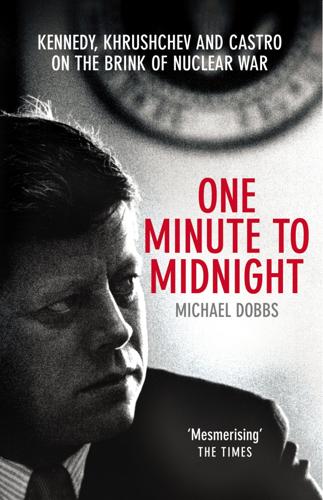
One Minute to Midnight: Kennedy, Khrushchev and Castro on the Brink of Nuclear War
by
Michael Dobbs
Published 3 Sep 2008
Lippincott, 1964), 230–6. 262 "missing in action": Maultsby personnel file. 263 When he learned of the stand-down order: Correspondence and interview with McNamara aide Col. Francis J. Roberts, May 2006. 263 "Tell the admiral": CNO Office logs, October 27, 1962, CNO Cuba, USNHC. The naval aide was Capt. Isaac C. Kidd, Jr. 263 "missiles flying through": Council for Correspondence, Newsletter No. 22, Herman Kahn files, NDU; author's interview with Irvin Doress, February 2006. 264 When the military radar station: Charts of Maultsby flight. 264 Earlier in the week: Author's interviews with former F-102 pilots Leon Schmutz and Joseph W. Rogers, June 2003. See also Sagan, 136–7; Alaskan Air Command Post log, October 22, 1962. 266 "Khrushchev, like every doctrinaire": Message to Joint Staff from Maj.
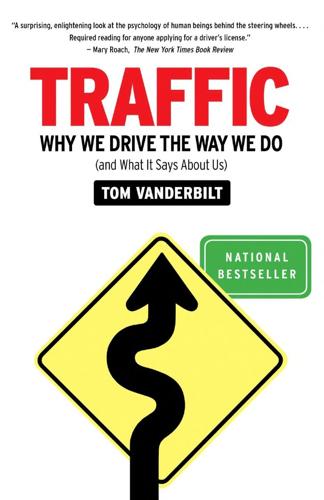
Traffic: Why We Drive the Way We Do (And What It Says About Us)
by
Tom Vanderbilt
Published 28 Jul 2008
Sanford, “Urban Medicine: Threats to Health of Travelers to Developing World Cities,” Journal of Travel Medicine, vol. 11, no. 5 (2004), pp. 313–27. John Adams brought up the Bermuda example in his book Risk and Freedom: The Record of Road Safety (Cardiff: Transport Publishing Projects, 1985), p. 2. He quotes, in turn, Herman Kahn, The Next 200 Years (New York: William Morrow, 1976), p. 168. cars and cyclists: Based on a conversation with city manager Judie Zimomra and police department records specialist Bob Conklin. Zimomra noted that there were traffic fatalities in the 1990s, but subsequent enforcement and engineering efforts have proven successful.
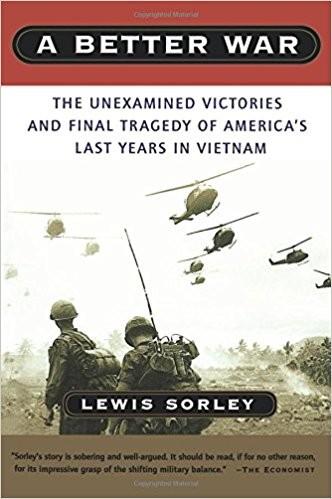
A Better War: The Unexamined Victories and Final Tragedy of America's Last Years in Vietnam
by
Lewis Sorley
Published 2 Jun 1999
The B-52s, “invisible predators,” produced “an experience of undiluted psychological terror into which we were plunged, day in, day out, for years on end.”25 BUNKER, ABRAMS, AND Colby found no shortage of outsiders eager to contribute their ideas as to how the war should be fought. Indeed, there was a constant stream of visitors with proposals of every stripe. An example was Herman Kahn, known primarily as a civilian theorist on nuclear war issues, who wanted to establish a Saigon branch office of his Hudson Institute. (Among the schemes proposed by Kahn was digging a ditch, or moat, entirely around Saigon.) Abrams asked General Wheeler to head off any Kahn proposals in Washington, assuring him that “MACV has developed adequate in-house talent to work areas of interest to this command.”26 A prominent part of that capability was the small but high-powered long-range study group that had, since the previous autumn, been at work directly for Abrams under Lieutenant Colonel Don Marshall.
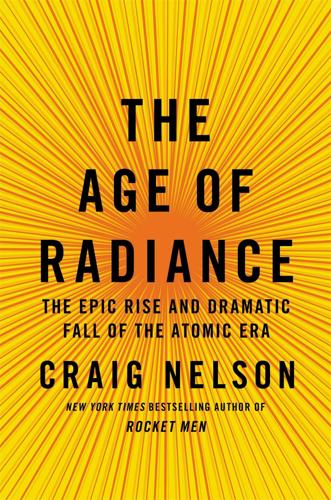
The Age of Radiance: The Epic Rise and Dramatic Fall of the Atomic Era
by
Craig Nelson
Published 25 Mar 2014
Thus the Cold War was a kind of transitional period from a disconnected world that used weapons as its main instrument for resolving world conflicts to some kind of different state of being—to a new world order, if you like.” At RAND in the Kennedy era, Albert Wohlstetter was eclipsed both physically and theoretically by Herman Kahn, who was described as looking “like a prize-winning pear” and “a thermonuclear Zero Mostel.” Kahn was renowned for his two-day, twelve-hour lectures, which employed von Neumann’s game theory to “think about the unthinkable”—nuclear holocaust as a round of poker. In a world of strategies called MAD and NUTS and ever-more-deranged notions of atomic warfare, Kahn was the endgame.

Extreme Money: Masters of the Universe and the Cult of Risk
by
Satyajit Das
Published 14 Oct 2011
When this clock was originally erected, the U.S. national debt was under $3 trillion. The clock was switched off from 2000 to 2002 when the national debt briefly fell. Subsequently, as the debt started to rise, the clock was restarted. By 2009, the debt exceeded $10 trillion, requiring Douglas Darst, Seymour’s son, to arrange for a new clock with extra capacity. In the 1950s, Herman Kahn, a strategist at the RAND Corporation, and Ian Harold Brown, a risk analyst, proposed a doomsday machine. It consisted of a computer linked to a stockpile of hydrogen bombs, programmed to detonate them and bathe the planet in nuclear fallout at the signal of an impending nuclear attack from another nation.

Accessory to War: The Unspoken Alliance Between Astrophysics and the Military
by
Neil Degrasse Tyson
and
Avis Lang
Published 10 Sep 2018
A clearinghouse for responsible information on directed-energy technologies for mostly military but also civilian use is Wave Front: The Directed Energy Newsletter, published by DEPS, the Directed Energy Professional Society, www.deps.org/DEPSpages/newsletter.html. (All accessed Apr. 22, 2017.) 25.Preston et al., Space Weapons Earth Wars, 128. 26.The futurist Herman Kahn (Dr. Strangelove) used this phrase as a book title in 1962 and again in 1985. 27.In 1946 the Air Force was still the Army Air Force, and LeMay was its R & D director, but the National Security Act of 1947 created the Air Force as an independent branch. In 1948 LeMay became the first commander of Strategic Air Command.
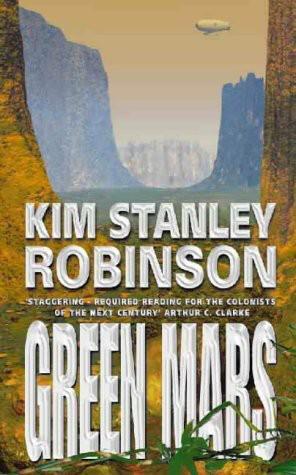
Green Mars
by
Kim Stanley Robinson
Published 23 Oct 1993
Or that it hadn’t been the contest of two great global alliances, but was much more confused and complex: different sources would claim it was north against south, or young against old, or UN against nations, or nations against transnationals, or transnationals against flags of convenience, or armies against police, or police against citizens— so that it began to seem every kind of conflict at once. For a matter of six or eight months the world had descended into chaos. In the course of his wanderings through “political science” Sax had stumbled across a pseudoscientific chart by a Herman Kahn, called an “Escalation Ladder,” which attempted to categorize conflicts according to their nature and severity. There were forty-four steps in Kahn’s ladder, going from the first, Ostensible Crisis, up gradually through categories like Political and Diplomatic Gestures, Solemn and Formal Declarations, and Significant Mobilization, then more steeply through steps like Show of Force, Harassing Acts of Violence, Dramatic Military Confrontations, Large Conventional War, and then off into the unexplored zones of Barely Nuclear War, Exemplary Attacks Against Property, Civilian Devastation Attack, and right on up to number forty-four, Spasm or Insensate War.

Enlightenment Now: The Case for Reason, Science, Humanism, and Progress
by
Steven Pinker
Published 13 Feb 2018
The Doomsday Clock, despite adorning a journal with “Scientists” in its title, does not track objective indicators of nuclear security; rather, it’s a propaganda stunt intended, in the words of its founder, “to preserve civilization by scaring men into rationality.”70 The clock’s minute hand was farther from midnight in 1962, the year of the Cuban Missile Crisis, than it was in the far calmer 2007, in part because the editors, worried that the public had become too complacent, redefined “doomsday” to include climate change.71 And in their campaign to shake people out of their apathy, scientific experts have made some not-so-prescient predictions: Only the creation of a world government can prevent the impending self-destruction of mankind. —Albert Einstein, 195072 I have a firm belief that unless we have more serious and sober thought on various aspects of the strategic problem . . . we are not going to reach the year 2000—and maybe not even the year 1965—without a cataclysm. —Herman Kahn, 196073 Within, at the most, ten years, some of those [nuclear] bombs are going off. I am saying this as responsibly as I can. That is the certainty. —C. P. Snow, 196174 I am completely certain—there is not the slightest doubt in my mind—that by the year 2000, you [students] will all be dead.

How the Mind Works
by
Steven Pinker
Published 1 Jan 1997
Strangelove, with his disconcerting tic of giving the Nazi salute, is one of cinema’s all-time eeriest characters. He was meant to symbolize a kind of intellectual who until recently was prominent in the public’s imagination: the nuclear strategist, paid to think the unthinkable. These men, who included Henry Kissinger (on whom Sellers based his portrayal), Herman Kahn, John von Neumann, and Edward Teller, were stereotyped as amoral nerds who cheerfully filled blackboards with equations about megadeaths and mutual assured destruction. Perhaps the scariest thing about them was their paradoxical conclusions—for example, that safety in the nuclear age comes from exposing one’s cities and protecting one’s missiles.

Command and Control: Nuclear Weapons, the Damascus Accident, and the Illusion ofSafety
by
Eric Schlosser
Published 16 Sep 2013
New York: Columbia University Press, 2010. Garwin, Richard L., and George Charpak. Megawatts and Megatons: The Future of Nuclear Power and Nuclear Weapons. Chicago: University of Chicago Press, 2002. George, Peter. Commander-1. New York: Delacorte Press, 1965. Ghamara-Tabrizi, Sharon. The Worlds of Herman Kahn: The Intuitive Science of Thermonuclear War. Cambridge, MA: Harvard University Press, 2005. Giarchi, G.G. Between McAlpine and Polaris. London: Routledge & Kegan Paul, 1984. Gibson, Chris. Vulcan’s Hammer: V-Force Projects and Weapons Since 1945. Manchester, England: Hikoki Publications, 2011.
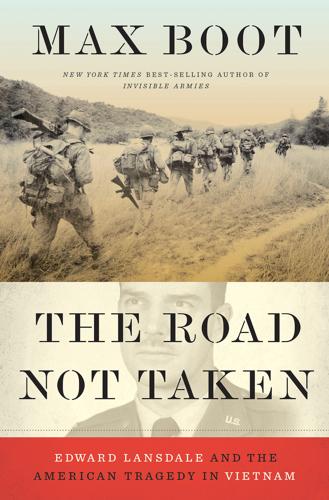
The Road Not Taken: Edward Lansdale and the American Tragedy in Vietnam
by
Max Boot
Published 9 Jan 2018
He later called his years in the Corps “the happiest time in my life.”34 Ellsberg left the Marines in 1957 to assume a prestigious fellowship at Harvard and continue his graduate studies. Eventually, in 1962, he would complete his PhD. By then, he had already been working for three years at the RAND Corporation in Santa Monica, California, the nation’s leading defense think tank, where intellectual heavyweights such as Albert Wohlstetter, Herman Kahn, Bernard Brodie, and Harry Rowen were becoming famous for applying social science methods to the study of nuclear deterrence. Even at RAND, where genius was common, Ellsberg stood out as a “supergenius,” possibly a future Nobel Prize winner.35 He was also a super-womanizer who openly bragged to colleagues about his conquests—and even passed around the RAND office nude photos of women he had slept with.36 His family, including two young children, did not command the same level of attention.
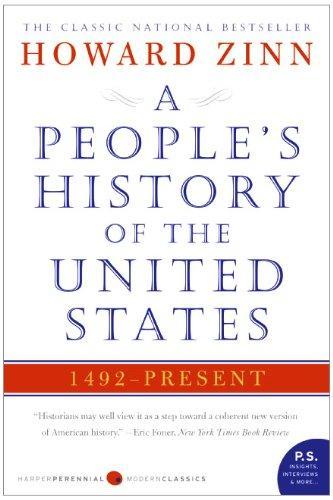
A People's History of the United States
by
Howard Zinn
Published 2 Jan 1977
The Atomic Energy Commission insisted that the deadly effects of atomic tests were exaggerated, and an article in 1955 in the Reader’s Digest (the largest-circulation magazine in the United States) said: “The scare stories about this country’s atomic tests are simply not justified.” In the mid-fifties, there was a flurry of enthusiasm for air-raid shelters; the public was being told these would keep them safe from atomic blasts. A government consultant and scientist, Herman Kahn, wrote a book, On Thermonuclear War, in which he explained that it was possible to have a nuclear war without total destruction of the world, that people should not be so frightened of it. A political scientist named Henry Kissinger wrote a book published in 1957 in which he said: “With proper tactics, nuclear war need not be as destructive as it appears. . . .”
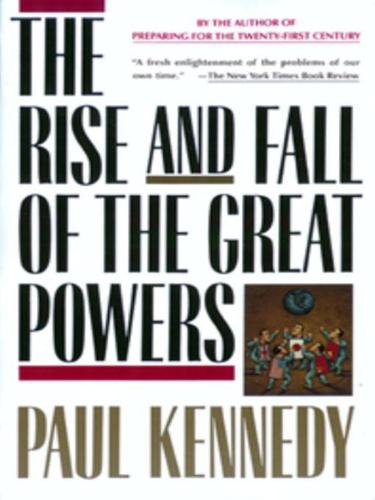
The Rise and Fall of the Great Powers: Economic Change and Military Conflict From 1500 to 2000
by
Paul Kennedy
Published 15 Jan 1989
To be sure, its rate of growth over those decades was unusually swift, because of special conditions. Yet according to many assessments,75 the Japanese economy is still likely to expand about 1½ to 2 percent a year faster than the other large economies (except, of course, China) over the next several decades.* It is for that reason that scholars such as Herman Kahn and Ezra Vogel have argued that Japan will be “number one” economically in the early twenty-first century, and it is not surprising that many Japanese are fired by that very prospect. For a country which possesses only 3 percent of the world population and only 0.3 percent of its habitable land, it seems an almost unbelievable achievement; and but for the possibilities inherent in the new technology, one would be tempted to assume that Japan was already close to maximizing the potential of its people and land and that, like other relatively small peripheral or island states (Portugal, Venice, the Netherlands, even Britain in its time) it would one day be eclipsed by nations which had far larger resources and merely needed to copy its successful habits.
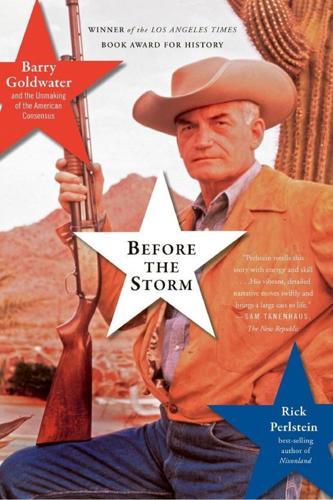
Before the Storm: Barry Goldwater and the Unmaking of the American Consensus
by
Rick Perlstein
Published 17 Mar 2009
Out of the shadows glides a queer man in a wheelchair—Dr. Strangelove, America’s director of weapons research—who muses, impressed, in a thick German accent (suggesting at once the three towering emigre giants of American strategic thinking: Edward Teller, Harvard professor Henry Kissinger, and Herman Kahn, whose boast that America could limit its casualties in a nuclear exchange to a mere twenty million people inspired the movie’s best joke) about how perfectly logical all of it is. “Deterrence,” he hisses, “ees the art of producing in zee mind of zee enemy zee fear to attack.” In the paradoxical world of nuclear combat, a doomsday machine is a splendid idea: “Because of zee irrevocable and unalterable decision-making process zat rules out human meddling, zee doomsday machine ees terrifying, and seemple to understand, and complete-ly credible and conveencing.”
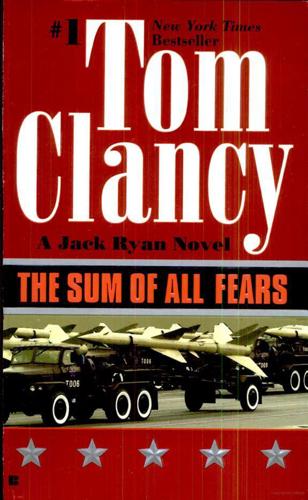
The Sum of All Fears
by
Tom Clancy
Published 2 Jan 1989
The negotiations were going along smoothly until one of the knights was stung by an asp and drew his sword to kill the reptile. The others saw the sword being drawn and immediately fell upon each other. A tremendous slaughter ensued. The chronicle is quite specific about the point that the slaughter was excessive chiefly because the battle took place without preparations and premeditation. HERMAN KAHN, On Thermonuclear War * * * PROLOGUE Broken Arrow "Like a wolf on the fold." In recounting the Syrian attack on the Israeli-held Golan Heights at 1400 local time on Saturday, October 6th, 1973, most commentators automatically recalled Lord Byron's famous line. There is also little doubt that that is precisely what the more literarily inclined Syrian commanders had in mind when they placed the final touches on the operations plans that would hurl more tanks and guns at the Israelis than any of Hitler's vaunted panzer generals had ever dreamed of having.
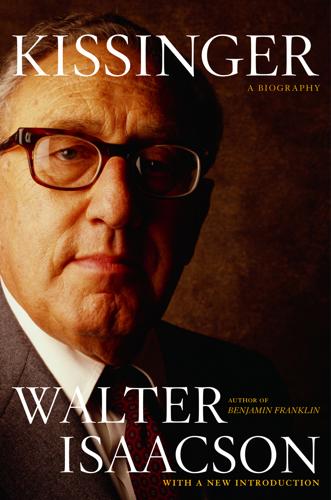
Kissinger: A Biography
by
Walter Isaacson
Published 26 Sep 2005
The book included two previously published articles by Kissinger: “Arms Control, Inspection and Surprise Attack,” Foreign Affairs, July 1960, 557; “Limited War: Conventional or Nuclear?—A Reappraisal,” Daedalus, Fall 1960, 800. The Daedalus issue is devoted entirely to arms control and contains important articles by Robert Bowie, Herman Kahn, Edward Teller, Jerome Weisner, and Thomas Schelling. 22. Necessity for Choice, ix–xi, 2–6; Tom Schelling, Feb. 3, 1989. 23. Necessity for Choice, 32–36, 57, 59, 81–83, 87, 89; Henry Kissinger, Mar. 8, 1989. 24. Kissinger, “The White Revolutionary: Reflections on Bismarck,” Daedalus, Summer 1968, 888, 893, 898, 906, 910.

The Better Angels of Our Nature: Why Violence Has Declined
by
Steven Pinker
Published 24 Sep 2012
If one were to calculate the amount of destruction that nations have actually perpetrated as a proportion of how much they could perpetrate, given the destructive capacity available to them, the postwar decades would be many orders of magnitudes more peaceable than any time in history. None of this was a foregone conclusion. Until the sudden end of the Cold War, many experts (including Albert Einstein, C. P. Snow, Herman Kahn, Carl Sagan, and Jonathan Schell) wrote that thermonuclear doomsday was likely, if not inevitable.137 The eminent international studies scholar Hans Morgenthau, for example, wrote in 1979, “The world is moving ineluctably towards a third world war—a strategic nuclear war. I do not believe that anything can be done to prevent it.”138 The Bulletin of the Atomic Scientists, according to its Web site, aims to “inform the public and influence policy through in-depth analyses, op-eds, and reports on nuclear weapons.”